By providing your information, you agree to our Terms of Use and our Privacy Policy . We use vendors that may also process your information to help provide our services. This site is protected by reCAPTCHA Enterprise and the Google Privacy Policy and Terms of Service apply.

Gene Roddenberry at 100: The ‘Star Trek’ Creator Imagined a Glorious Future — and Our Fraught Present
Christian blauvelt.
- Share on Facebook
- Share to Flipboard
- Share on LinkedIn
- Show more sharing options
- Submit to Reddit
- Post to Tumblr
- Print This Page
- Share on WhatsApp
The 23rd Century feels like it’s further away than ever.
If you’re a “ Star Trek ” fan, the future it presents has always been part of its appeal: that humanity will unite as one while celebrating our differences, put war and hatred and discrimination and poverty behind us, and dedicate our lives to bettering ourselves through discovery among the stars. This has never been just another sci-fi franchise. “Star Trek” came with its own philosophy, and its particular optimism right now may feel less suited for sci-fi than fantasy.
But Gene Roddenberry, the late “Star Trek” creator who was born 100 years ago on August 19, imagined our terrible present, too. Before he died in 1991 at age 70, he went about diagnosing the ills of contemporary life with a candor uncommon to Hollywood franchise builders usually averse to courting controversy.
“‘Star Trek’ proves the much-maligned common man and common woman are ready for the 23rd century now,” Roddenberry once said. “And they are light years ahead of their petty governments and visionless leaders.”
Cue the PR department’s freakout. But that iconoclasm is what Rod Roddenberry , Gene’s son, celebrates over the course of this year with his new initiative thinkTREK, which aims to inspire people to incorporate the philosophy of his father into their lives. Rod loves that particular quote so much he finishes it for me verbatim when I start delivering it over the phone. And every day on social media, he’s presenting a different celebrity — Ming-Na Wen, Rosario Dawson, Whoopi Goldberg — reciting one of his dad’s quotes.
Here’s one of them: “I believe in humanity. We are an incredible species. We’re still just a child creature, we’re still being nasty to each other. And all children go through those phases. We’re growing up, we’re moving into adolescence now. When we grow up — man, we’re going to be something!”
Sometimes, it seems like our species is made up entirely of Peter Pans: we never want to grow up. To Roddenberry, having belief in what humanity can be didn’t mean being naïve about what humanity often is, and imagining a better future means addressing the wrongs of the present.

“Even coming from the optimistic Roddenberry family, sometimes, looking around, it’s hard to see the optimism,” Rod said. “People want the world to be a better place, but sadly, whether it’s government or large industry, people are not looking toward the future. They’re looking how to benefit right now.”
In fact, before the glorious future of Kirk, Picard, Starfleet, and the Federation, Rod’s father imagined an absolutely horrible 21st century, one even worse than our own, at least so far: It culminates with World War III in 2026, obliterating 600 million lives in a nuclear cataclysm. The global order devolves into a patchwork of warlords who mete out swift justice in kangaroo courts. One genocidal madman, a Col. Green — a character Gene created for “The Original Series” in 1969 — is hellbent on killing all those suffering from radiation poisoning following the fallout. On “The Next Generation,” Picard even says that Earth remained in chaos until the early 22nd century. The way things are going in our world, that seems about right.
The optimism that Gene Roddenberry then had for how humanity could become, well, more human — at least by the 23rd century — was no product of a sheltered life. Far from it. He flew 89 combat missions as the pilot of a B-17 bomber over Guadalcanal and the other Solomon Islands during World War II. As third officer of Pan Am Flight 121, journeying from Karachi to Istanbul, he had to take charge after the plane crashed in the Syrian desert, killing 15 of the 36 people onboard. With two broken ribs, he helped pull survivors from the wreckage. The last one died in his arms. Then, following in his father’s footsteps, he joined the LAPD — and got the idea that writing could be a full-time career. Selling stories from the beat to TV cop shows of the day, such as “Highway Patrol,” he got his foot in the door of Hollywood.
“I do think it shows that someone who traveled the world, met other cultures, fought in wars, had to deal with authority and chain of command, probably means he ran into a lot of ethical issues and situations where he probably didn’t agree with what he was forced to do,” Rod says. The moral dilemmas and issue-driven topics of “Star Trek” are a natural outgrowth of that life experience. “Then, he was able to look into the future and say, ‘Based on what I’ve seen in my life, I know what we can be and what we’re capable of, so let’s try to imagine a future where we are those people.’”

“Star Trek” has been many things throughout its 55 years, but it remains celebrated certainly for the anti-racism of its “Original Series” run from 1966 to 1969, which presented the first kiss on U.S. television between a white man (William Shatner) and Black woman (Nichelle Nichols). The very idea of Nichols’ Uhura being a senior bridge officer on the Enterprise was radical in 1966, and when the actress thought about leaving the show, Martin Luther King Jr. himself told her that her role was representation so valuable she should stay.
“I think the ideas my father presented in the ‘60s were significant then, and perhaps even more significant now,” Rod said.
It’s a sentiment shared by millions of “Star Trek” fans — and one that’s led to many debating for the past so many decades whether whatever “Star Trek” is being made at the moment lives up to Gene’s vision. We know he disliked the movies made, largely out of his control, after 1979’s “Star Trek: The Motion Picture,” which was his baby. “He’d write a scathing letter to the producers [of the subsequent films] and explain all the reasons why they were wrong,” Rod said, but he’s surprised by the story in Edward Gross and Mark A. Altman’s “The Fifty-Year Mission” that his father supposedly hated the idea of Spock’s death so much in “The Wrath of Khan” that he leaked the film’s script. That’s one Rod hadn’t heard before, but “I can’t for certain say he didn’t,” he said. And, despite Patrick Stewart’s feeling otherwise, Rod feels that his father did warm to the English actor as Capt. Picard on “The Next Generation,” and that that series was the purest expression of his “Trek” vision. “I think Next Gen was his chance to get it right. I think that that was the bookend to my father’s life. I think that that was his ‘Star Trek,’ at that point in his life.”
Rod recognizes that the “Star Trek” films have to appeal to a wider audience and be more action-oriented. But he shares with his father a belief that “these movies may have, arguably, missed the opportunity to talk about social issues or dig deeper into them,” while noting that if they had tried to be more issue-oriented “would they have appealed to a broader audience?” He’s careful to say that he believes “Star Trek” should never become “Star Wars,” a space opera. It should hold up a mirror to our own world, as much as it explores the 23rd and 24th centuries and beyond. (Though Rod does like “Star Wars” as its own thing, as did Gene, who bought his son “Star Wars” birthday cakes.)

Some fans will say they think “Deep Space Nine,” now a beloved cult hit within the larger “Trek” fandom, is a series Roddenberry would have disliked, because it wasn’t entirely about exploration, featured a multi-season war, and presented characters as likely to clash as deliver each other inspiration. But Rod is charitable on the subject.
“I’m almost done with all of ‘Deep Space Nine,’” he says. “We are flawed human beings. Therefore, when Kira lashes out because she fought in the war and brings her emotions to a boil, people can identify with that. Character redeems itself and shows the right way and acknowledges the errors of her way, or whatever, and people connect with that and they’re able to, maybe, forgive themselves when they lashed out. I see the value. I definitely see the value.” But he understands when fans quibble too: “I was doing that a little bit with ‘Discovery,’ until Season 2 and Season 3 of that show really brought ‘Star Trek’ back home to where it needs to be.”
That candor is impressive, considering that Rod is himself an executive producer on “Discovery” and the other shows currently streaming on Paramount+: “Picard” and “Lower Decks” as well as the upcoming “Strange New Worlds” and “Prodigy.” He’s quick to state that he’s not a writer and that his role is largely to serve as a guiding light for the series, helping the creative teams to keep in mind his father’s original philosophy. He rallies to the defense of these shows from accusations found in certain corners of the fandom online that they’re “too political” or “too woke”: “If they’re saying Star Trek’s woke, that’s fine. It needs to be woke, because they need to put things in your face so there is a discussion.”
Those decrying the new series as too woke will probably bristle at some of Rod’s other views. “No one’s doing it for nefarious purposes,” so he’s excited by Elon Musk and Richard Branson opening up a new era of privatized space travel — and thinks his father would support it too — but he “hates” the name Space Force for the U.S. military’s latest branch and opposes “the idea of militarizing space.” He acknowledges that Starfleet’s delta logo is something the Air Force has used in the past and that his father probably borrowed it himself, but suspects that the incorporation of a very Starfleet-like delta in the Space Force insignia is a tip of the hat to “Star Trek.” He also wishes that instead of Neil Armstrong and Buzz Aldrin planting the U.S. flag on the moon, “we had taken the opportunity to put a flag that was more universal, to honor all of humanity.”
That’s the kind of all-embracing spirit you’d expect from the son of someone who dropped bombs on Japanese forces during World War II, then married his wife (and “Star Trek” actress) Majel Barrett in a Shinto ceremony in Japan. What horrible things had he seen during that war? How many lives did he take because of his actions? How much death had he himself seen?
Gene Roddenberry’s life is proof that you can experience traumatizing events and still find the capacity for hope. That in fact optimism may be the result of the maturity that comes from living a life like that. You can actually be a Peter Pan who grows up but still steers second star to the right and straight on ’til morning.
Here’s hoping all of us can do the same. Maybe then a better world will await.
Most Popular
You may also like.

- A Bold Vision: How <i>Star Trek</i> First Made It to the Screen
A Bold Vision: How Star Trek First Made It to the Screen
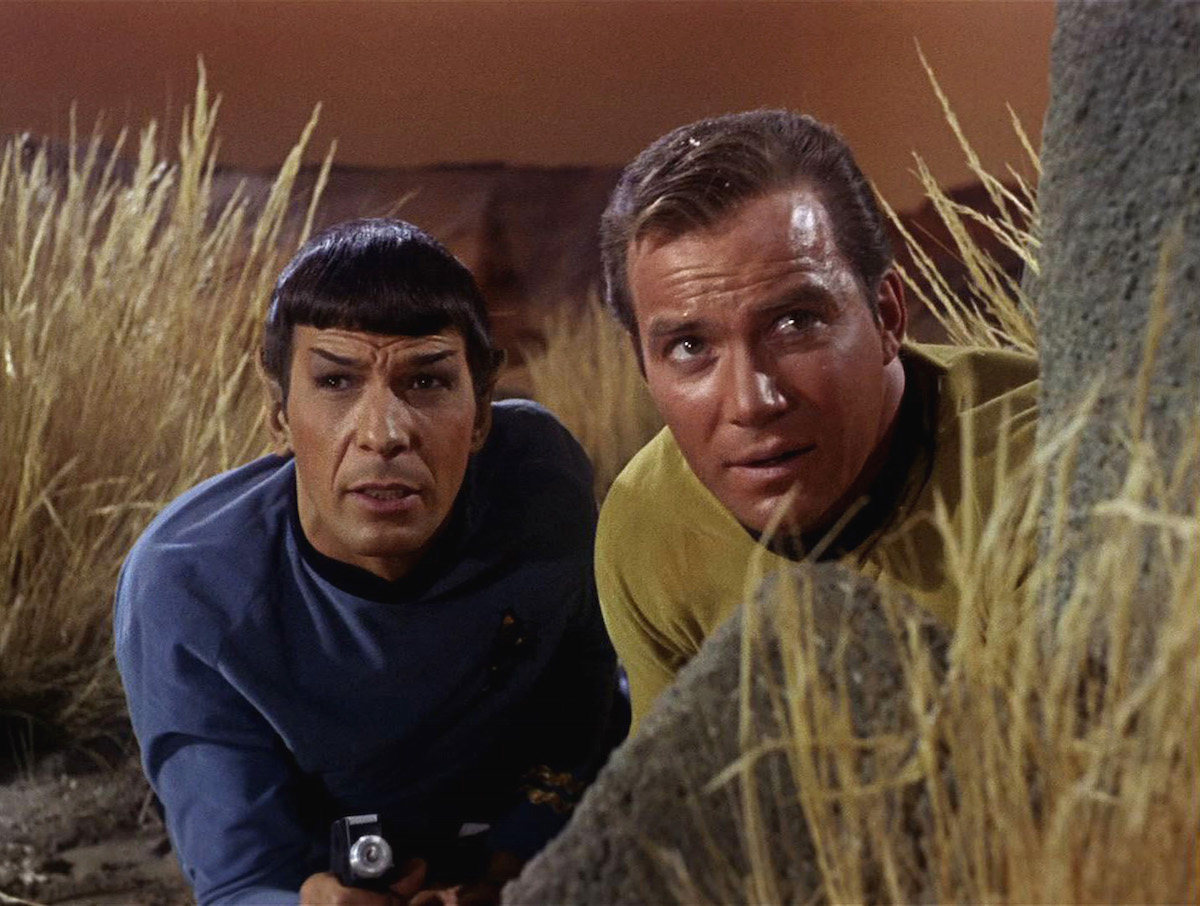
L ike one of those primitive planets the Enterprise crew would occasionally stumble upon (and where they would have to make sure, thanks to the Prime Directive, not to use their futuristic knowledge and gear to alter the civilization’s normal course of development), the birth of Star Trek seems now to date from an almost prehistoric television era. Creator Gene Roddenberry pitched his space-adventure series to the networks as a “Wagon Train to the Stars,” a nod to the westerns that were still the gold standard in popular TV drama in the 1960s. The special effects were almost comically low-tech—all those toy-chest phaser guns, tin-foil headpieces for the aliens and stock shots of crew members getting jostled in the corridor whenever an explosion rocked the ship. (Seatbelts weren’t required in cars yet, much less spaceships.) The Enterprise never actually landed on any of the planets it visited—crew members were “beamed” there instead—for the simple reason that the special effects would have been too costly.
“Space: the final frontier,” intoned William Shatner in the show’s famous opening, announcing the U.S.S. Enterprise ’s five-year mission to explore new worlds, to seek out new civilizations, to “boldly go where no man has gone before.” But the mission ended in 1969 after just three seasons, when NBC canceled the series because of low ratings that today, in the fragmented cable world, would have been hailed as a smash success.
Yet Star Trek had an unlikely rebirth and journeyed on to become the most durable cult hit in TV history. The series got a second wind in syndicated reruns; then came a Saturday-morning cartoon series (with the voices of most of the original cast); then, in 1979, the first of six feature films reuniting the TV crew on the big screen. A sequel to the original series, Star Trek: The Next Generation , debuted in 1987 and became the highest-rated series in syndicated (off-network) television. That was followed by three more TV series and six more movies, featuring both the Next Generation cast and a new set of actors portraying the original Enterprise crew in their younger days. Yet another feature film—the 13th, Star Trek Beyond —will hit theaters in July 2016.
The show was a merchandising bonanza, spawning such items as paperback novelizations of Trek episodes, T-shirts, action figures, models of the starship Enterprise , commemorative coins, video games and Star Trek chess sets. The first Star Trek convention, held at New York’s Statler Hilton hotel in January 1972, drew 3,000 fans; within two years, attendance at the annual get-together had quadrupled. Familiar lines—“Beam me up, Scotty” (which was never actually spoken in precisely those words on the show); “Live long and prosper,” Mr. Spock’s Vulcan valedictory—became national catchphrases. Enthusiasts wrote books analyzing the show’s episodes and ethos; cast members turned out memoirs of their days on the series. The show’s futuristic gadgetry anticipated real-life innovations, such as cellphones and medical scanning technology. NASA originally intended to name its first shuttle craft the Constitution . After Trek fans launched a letter-writing campaign in 1976, the space agency switched to the more popular choice: Enterprise .
But Star Trek was always more than just a sci-fi nerd’s love object. The series was born in the midst of the turbulent 1960s, and its outer-space adventures often reflected and commented on the issues of that divisive decade: the Vietnam War, civil rights, Cold War politics, the budding environmental movement. The show had an idealistic, ’60s counterculture mind-set, imagining a 23rd-century world in which humans had outgrown war and prejudice. “We must learn to live together, or most certainly we will soon all die together” was how Roddenberry, who died in 1991, expressed the show’s message. “Although Star Trek had to entertain or go off the air, we believed our format was unique enough to allow us to challenge and stimulate the audience.” Star Trek proved that an outer-space action show could appeal to our intelligence, tackle serious issues—and, in a troubled time, offer some hope for the future.
Roddenberry, a Texas-born former Pan Am pilot and press officer for the Los Angeles Police Department, began writing scripts in the 1950s for TV shows like Dragnet , Dr. Kildare and Have Gun, Will Travel . A science-fiction buff since junior high school, he had the idea for a series that would mix the anthology format of sci-fi shows like The Twilight Zone and The Outer Limits with a cast of continuing characters—a kind of Gulliver’s Travels of the future, as he once described it.
He took the idea first to program executives at CBS, who quizzed him for two hours about his plans for the show and then told him goodbye and bought Lost in Space instead. He had better luck at NBC, which ordered up a pilot episode. Titled “The Cage,” the show starred Jeffrey Hunter (a feature-film star who had appeared with John Wayne in The Searchers and played Jesus Christ in King of Kings ) as a starship captain named Pike who is taken captive on a planet whose inhabitants want to use him to breed a new race. The network rejected the show as “too cerebral” but liked the concept enough to give Roddenberry another chance with a second pilot.
The second go-round featured an almost entirely new cast. Replacing Hunter (who decided that starring in a science-fiction series would be a bad career move), Roddenberry cast William Shatner, a Canadian actor with substantial stage and screen experience, as Capt. James T. Kirk. Joining him on the bridge was a conspicuously international crew: a Scottish chief engineer (James Doohan), a Japanese helmsman (George Takei) and an African-American communications chief (Nichelle Nichols), as well as a nondenominational ship’s doctor, played in the pilot by Paul Fix and later by DeForest Kelley.
Only one cast member remained from the original pilot: Leonard Nimoy, as the half-Vulcan, half-human Mr. Spock. NBC wanted to drop him too, complaining that Nimoy’s pointy ears and sinister eyebrows made him look “satanic.” But Roddenberry insisted on keeping him. “I felt we couldn’t do a space show without at least one person on board who constantly reminded you that you are out in space and in a world of the future,” he said. “NBC finally agreed to do the second pilot with Spock in it, saying, ʻWell, kind of keep him in the background.’” Spock, with his scrupulously logical mind and exotic Vulcan powers, soon became the show’s most popular character.
Unlike most TV shows of the day, which could reuse props and sets from other cop shows or westerns or sitcoms, Star Trek had to create virtually an entire new world from scratch. The layout of the Enterprise was mapped out in detail. Roddenberry obsessed over the verisimilitude of the gadgets, costumes and terminology. Keeping ahead of real-life technology proved to be a challenge. The hand weapons carried by the crew were originally called lasers. When Roddenberry realized that real-life lasers might become commonplace within a few years, he made a last-minute switch and called them “phasers.” “We didn’t want people saying to us three years from now, ʻOh, come on now, lasers can’t do that,’” he explained.
Roddenberry delivered his second pilot in January 1966, and this time NBC picked it up for the fall schedule. Star Trek made its network debut on Thursday night, September 8, opposite My Three Sons and Bewitched . (The first episode was not the pilot but another episode, called “The Man Trap,” in which the crew encounter a vampire-like alien that sucks its victims dry of body salt. NBC wanted a monster.) Initial reaction was not encouraging. “ Star Trek obviously solicits all-out suspension of disbelief, but it won’t work,” wrote Variety . “Even within its sci-fi frame of reference it was an incredible and dreary mess of confusion and complexities.”
Ratings were just good enough to win the series a renewal, but by the middle of its second season, NBC was ready to cancel it. A fervent letter-writing campaign from fans persuaded the network to reverse itself—the first recorded instance of an audience campaign saving a doomed TV show. But it was only a temporary reprieve. For its third season, the show’s budget was cut, Roddenberry stepped away from day-to-day involvement, and by most lights the show’s quality declined drastically. By the end of season three, cancellation was a foregone conclusion.
In its three seasons, Star Trek had produced just 79 episodes, but that was enough to sell the reruns in syndication. There they proved amazingly popular, and pressure started to build to bring the series back. Instead, prompted by the success of Star Wars , Paramount (which had acquired the rights to the series from Desilu, the studio that originally produced it) decided to give the Star Trek crew a shot at the big screen. The 1979 feature Star Trek: The Motion Picture was only a middling success, but its 1982 follow-up, Star Trek II: The Wrath of Khan (with Ricardo Montalbán re-creating a villain he had played in a Trek episode from season one), was a hit both with critics and at the box office. The franchise began expanding at warp speed.
The new iterations surpassed the rather crude original series in many ways. Star Trek: The Next Generation , with an entirely new crew and cast headed by Royal Shakespeare Company actor Patrick Stewart (and with Roddenberry back in charge), boasted higher production values and more sophisticated sci-fi plots, not to mention better ratings than the original ever got. And the fourth series, Star Trek: Voyager , which debuted in 1995, rectified one major shortcoming of the earlier versions: for the first time, a woman (Kate Mulgrew) was in command of the ship.
Still, the original series boldly went where few TV shows of its day were going. Its multicultural, multiracial cast was itself a statement on diversity. “Intolerance in the 23rd century? Improbable!” said Roddenberry. “If man survives that long, he will have learned to take a delight in the essential differences between men and between cultures.” When Pravda complained that the international space crew included no representative of the Soviet Union, Roddenberry added Walter Koenig to the cast in season two, as the Russian navigator Chekov.
The space adventures, moreover, were often thinly disguised allegories for very current social problems. In one episode, “Let That Be Your Last Battlefield,” the Enterprise crew encounter a planet, all of whose inhabitants are black on one side, white on the other. Yet they are riven by racial hatred between those who are black on the right half and those black on the left—a stark, if hardly subtle, condemnation of racial prejudice. In the Cold War–themed “A Private Little War,” Kirk faces a dilemma over whether to supply arms to a primitive people engaged in a guerrilla war, to match the guns the Romulans have given to their enemies. In another episode, Kirk is taken captive by the Romulans and held as a spy after the Enterprise strays into the neutral zone—a story inspired by the then-recent North Korean capture of the U.S.S. Pueblo .
“Television was so tightly censored that science fiction was the only way to escape the taboos in politics, religion or anything else that was controversial,” Roddenberry said. “I really don’t consider myself a science-fiction writer, but I’m interested in what’s happening on this planet and what may happen. In our society, we’re treating man less and less like an individual and more like a social organism.”
Roddenberry’s utopian vision was not always reflected behind the scenes. Several writers for the show, among them the prominent sci-fi author Harlan Ellison (who wrote the classic time-travel episode “City on the Edge of Forever”), fumed at Roddenberry’s habit of rewriting scripts so they would conform to his strict conception of the show’s characters and message. Some cast members complained in later years about Shatner’s camera-hogging ego and his jealousy of any co-star (especially Nimoy) who upstaged him with more lines.
Nor did the actors always welcome being typecast for an entire career, forced to reprise their characters for years in front of Trek nerds whose obsessive devotion to the show had its creepy side. Shatner himself expressed it memorably in a Saturday Night Live sketch from 1986. Appearing at a Star Trek convention, TV’s Capt. Kirk gets testy after too many trivia-obsessed questions from fans. “Get a life!” he finally blurts out to the shocked fans—before being chastised by a convention organizer and returning to the microphone to claim that he was, of course, just playing the “evil Capt. Kirk” from the episode “The Enemy Within.”
The fans were relieved. Shatner, in the sketch and real life, seemed resigned to his Kirkian destiny. And Star Trek —the show, the movies, the franchise, the cult—achieved a feat that even a Vulcan mind meld couldn’t have foreseen. It lived long and prospered.

Richard Zoglin is TIME ’s theater critic and the author of Hope: Entertainer of the Century . Read more in TIME’s special Star Trek: Inside The Most Influential Science Fiction Series Ever . Available at retailers and at Amazon.com.
More Must-Reads From TIME
- The 100 Most Influential People of 2024
- The Revolution of Yulia Navalnaya
- 6 Compliments That Land Every Time
- What's the Deal With the Bitcoin Halving?
- If You're Dating Right Now , You're Brave: Column
- The AI That Could Heal a Divided Internet
- Fallout Is a Brilliant Model for the Future of Video Game Adaptations
- Want Weekly Recs on What to Watch, Read, and More? Sign Up for Worth Your Time
Contact us at [email protected]
Star Trek: The Next Generation as Philosophy: Gene Roddenberry’s Argument for Humanism
- Living reference work entry
- First Online: 11 January 2020
- Cite this living reference work entry

- Kevin S. Decker 2
645 Accesses
Star Trek: The Next Generation ( TNG, 1987–1994) is a very close second to Star Trek (TOS, 1966–1969) in the hearts and minds of fans of televised science fiction. Although both series are examples of space opera that focus on the exploration of the cosmos by a group of Starfleet officers and their crew, TNG is notably different in execution. It explores the interests and backgrounds of its ensemble cast more thoroughly, for example. It also entertains inter-season story arcs and fleshes out the cultural background and politics of alien races (both new and old) in a much more grandiose way.
In many ways, The Next Generation is also a more robust example of Star Trek creator Gene Roddenberry’s humanistic vision of the future than its progenitor. Ironically, this is partly because he had less personal creative control on TNG. This chapter will explore the various historical faces worn by humanists through history as well as Roddenberry’s distinctive contribution to that history. To humanize the philosophy of humanism in TNG, the chapter will look at the philosophical implications of the series-spanning antagonism and verbal sparring between Captain Jean-Luc Picard and the powerful, arrogant entity Q. It will then demonstrate, through a detailed look at representative TNG episodes, the arguments that support the credibility and value of humanism against other competing worldviews in the areas of virtue and character, religious belief, and social ethics.
This is a preview of subscription content, log in via an institution to check access.
Access this chapter
Institutional subscriptions
Alexander, David. 1994. Star Trek creator: The authorized biography of gene Roddenberry . New York: ROC Books.
Google Scholar
Aristotle. 1999. Nicomachean ethics , 2nd ed. Trans. T. Irwin. Indianapolis: Hackett Publishing,
Barrett, Michèle, and Duncan Barrett. 2017. Star Trek: The human frontier . 2nd ed. New York: Routledge.
Behe, Michael. 1996. Darwin’s black box . New York: Free Press.
Braine, F.S. 1994. Technological Utopias: The future of the next generation. Film & History 24 (1–2): 2–18.
Brenan, Megan. Religion considered important to 72% of Americans. Gallup website. https://news.gallup.com/poll/245651/religion-considered-important-americans.aspx . Accessed 6 Aug 2019.
Campbell, Joseph. 2008. The hero with a thousand faces . 3rd ed. Novato: New World Library.
Decker, Kevin S. 2015. Science and nature without god. In Revisiting Aquinas’ proofs for God’s existence in the 21st century , ed. Robert Arp. Amsterdam: Brill/Rodopi.
Dennett, Daniel. 2003. Freedom evolves . New York: Viking.
Grech, Victor. 2013. Star Trek ’s Picard: Humanity’s conscience. The New York Review of Science Fiction vol. 25, no. 6 (February 2013), 20–23.
Gross, Edward, and Mark A. Altman, eds. 1995. Captains’ logs: The unauthorized complete Star Trek voyages . New York: Little, Brown & Co.
———, eds. 2016a. The fifty-year mission: The first 25 years . New York: Thomas Dunne Books.
———, eds. 2016b. The fifty-year mission: The next 25 years, from the next generation to J.J. Abrams . New York: Thomas Dunne Books.
Guillen, Michael. 2006. Can a smart person believe in god? Nashville: Thomas Nelson.
Held, Virginia. 2007. The ethics of care: Personal, political, and global . New York: Oxford University Press.
Book Google Scholar
Ingersoll, Earl G. 1987. A conversation with Isaac Asimov. Science Fiction Studies 41, vol 14, part 1. https://www.depauw.edu/sfs/interviews/asimov41interview.htm . Accessed 30 May 2019.
James, William. 2000. Humanism and truth. In Pragmatism and other writings . New York: Penguin.
Jewett, Robert, and John Shelton Lawrence. 1977. The American Monomyth . New York: Anchor Press.
Johnson, David Kyle. 2018. Mystery therefore magic. In Bad arguments: 100 of the most important fallacies in Western philosophy , ed. Robert Arp, Steven Barbone, and Michael Bruce. Malden: Wiley-Blackwell.
Kitcher, Philip. 2014. Life after faith: The case for secular humanism. The Terry lectures . New Haven: Yale University Press.
Lamont, Corliss. 1990. The philosophy of humanism . 7th ed. New York: Continuum.
Levitsky, Steven, and Lucan A. Way. 2010. Competitive authoritarianism: Hybrid regimes after the cold war . New York: Cambridge University Press.
MacIntyre, Alasdair. 1984. After virtue . 2nd ed. Notre Dame: Notre Dame University Press.
Massing, Michael. 2018. Fatal discord: Erasmus, Luther, and the fight for the Western mind . New York: Harper.
Mencken, H.L. 2010. Memorial service. In Prejudices, first, second and third series , ed. Marion Elizabeth Rodgers. New York: Library of America.
Nauert, Charles. 2006. Humanism and the culture of renaissance Europe . New York: Cambridge University Press.
Norman, Richard. 2015. On humanism . 2nd ed. New York: Routledge.
Okuda, Michael, and Denise Okuda. 2016. The Star Trek encyclopedia . 2 vols. New York: Harper Design.
Pinker, Steven. 1997. How the mind works . New York: W.W. Norton & Co.
Relke, Diana M.A. 2006. Drones, clones and Alpha Babes: Retrofitting Star Trek’s humanism, post-9/11 . Calgary: University of Calgary Press.
Roddenberry, Gene. 1976. Inside Star Trek . Audio LP, Columbia Records.
Roddenberry, Majel Barrett. 1995. The legacy of ‘Star Trek’. The Humanist 55 (4): 9–11.
Schiller, Friedrich. 1993. Letters on the aesthetic education of man . Trans. E. M. Wilkinson and L.A. Willoughby. In Friedrich Schiller: Essays , eds. Walter Hinderer and Daniel O. Dahlstrom. New York: Continuum Press.
Seltzer, Leon F. Contemporary humanism and spirituality, Part 1. Psychology Today online, June 24, 2013. https://www.psychologytoday.com/us/blog/evolution-the-self/201306/contemporary-humanism-and-spirituality-part-1 . Accessed 13 June 2019.
Teitelbaum, Sheldon. How gene Roddenberry and his brain trust have boldly taken ‘Star Trek’ where no TV series has gone before: Trekking to the top. Los Angeles Times , May 5, 1991. https://www.latimes.com/archives/la-xpm-1991-05-05-tm-2100-story.html . Accessed June 10, 2019.
Zuckerman, Phil. 2010. Society without god: What the least religious nations can tell us about contentment . New York: New York University Press.
Download references
Author information
Authors and affiliations.
Eastern Washington University, Cheney, WA, USA
Kevin S. Decker
You can also search for this author in PubMed Google Scholar
Corresponding author
Correspondence to Kevin S. Decker .
Rights and permissions
Reprints and permissions
Copyright information
© 2020 The Author(s), under exclusive licence to Springer Nature Switzerland AG
About this entry
Cite this entry.
Decker, K.S. (2020). Star Trek: The Next Generation as Philosophy: Gene Roddenberry’s Argument for Humanism. In: The Palgrave Handbook of Popular Culture as Philosophy. Palgrave Macmillan, Cham. https://doi.org/10.1007/978-3-319-97134-6_3-1
Download citation
DOI : https://doi.org/10.1007/978-3-319-97134-6_3-1
Received : 14 June 2019
Accepted : 20 August 2019
Published : 11 January 2020
Publisher Name : Palgrave Macmillan, Cham
Print ISBN : 978-3-319-97134-6
Online ISBN : 978-3-319-97134-6
eBook Packages : Springer Reference Literature, Cultural and Media Studies Reference Module Humanities and Social Sciences Reference Module Humanities
- Publish with us
Policies and ethics
- Find a journal
- Track your research
Does Modern Star Trek Media Uphold Gene Roddenberry’s Vision?
What would the father of popular science fiction think of the Star Trek shows and movies of today?
2022 marks the year the Star Trek creator Gene Roddenberry would have turned 101, and though 30 years have passed since his death, it’s fair to say the legacy he created for himself is thriving. Creators have not only added to his work over the last 50 years, but his franchise has cemented itself as one of the pillars of science fiction storytelling. While he is considered the father of the utopian future, he was not always happy with the way his vision changed over the years, taking issue with various elements of The Next Generation. Thus the question arises: how does modern Star Trek live up to Roddenberry’s vision?
What is most interesting about this question is that it’s not looking into whether he would have liked the new shows, as the answer would most likely have been no. Before his passing in 1992, Roddenberry had already become disillusioned with what producers and writers were doing with the TNG, culminating in the episode “family” from season 4. The episode focuses on the crew of the Enterprise trying to get back to some sense of normality after their fight with the ( back then still scary ) Borg and the assimilation, and subsequent de-assimilation, of Captain Picard . Roddenberry apparently hated the episode, supposedly for not being “24th century” enough.
RELATED: Star Trek: The History Of The Vulcans, Explained
When Roddenberry first created Star Trek, it was with the intention of showing a utopian vision of the future, one where all the so-called “evils” of modern society had been eradicated. He created the Federation, and a world that ran based on principles and self development rather than money , but more importantly one where the issues surrounding ableism , discrimination, and racism were all but irradiated . People of the future were supposed to be perfect, and that went doubly for Starfleet and Starfleet captains. This went so far as them being aesthetically perfect too. The perfect captain for Roddenberry was Kirk, with his handsome physique, and strong jaw lines. On this note, he apparently wasn’t a fan of casting Patrick Stewart as the leading role in TNG, ( neither was lifelong friend Ian McKellen, apparently ) calling him a “bald, middle-aged Englishman” — far from the supposed “perfect” man of the future.
"Family," then, was highlighting everything that Roddenberry didn’t want Star Trek to be, showing what most people would describe as vulnerability and relatability, where he would call flaws. To make things worse, the episode showed the turbulent relationship Picard had with his older brother, and that all was not well at Château Picard. In Roddenberry’s mind, domestic friction should not happen when everyone is perfect, going against everything he wanted the show to be. It is worth noting that the older Roddenberry got, the more issues he took with choices like this. Perhaps a younger version of him would have been happy with this storyline, but the older version surely wasn’t.
Things changed quite a bit after TNG with the start of Voyager and Deep Space 9 , two programs that began after Roddenberry’s death. Many Trekkies believe this was a good thing, as they believe that Roddenberry would have hated what they did to his brain-child. DS9 especially would have irked him, as the show highlighted the corruption and dark underbelly of the Federation, showing them to be far from the perfect utopia Roddenberry had wanted. Both programs showed their respective main characters getting their hands dirty to do whatever they had to for what was right. This would have annoyed the man who legitimately made a rule during the first season of TNG stating that none of the main characters would enter into conflict themselves.
This continues into the very modern iterations into the franchise, with Picard, Strange New Worlds, and most importantly Star Trek: Discovery , a show filled with the gritty realism the other shows fail to fully portray. It shows a petty humanity, one of humans who have failed and who are struggling to survive a violent universe, who rely more so on luck than they do technological or societal advancements. While, according to fans, the show did get better, it is still tarnished by its first season, which was at heart a story of war and mediocre action sequences. Roddenberry wanted the Federation to be what everyone in the universe should strive to be. In his vision, conflict and issues arose from those not “advanced” enough to adopt humanity's new values, not the idea that the Federation was potentially as bad as anyone else, or that it really is human to err.
While it’s easy to state the many reasons why Roddenberry would have disliked modern day Star Trek, it’s not quite fair to say they don’t still uphold his original vision for the show. As Roddenberry became less and less involved with the shows, they changed in order to survive and appeal to mainstream audiences. In a lot of cases, this meant that they veered away from substance and relied more on action. But at their heart, every Star Trek series has focused on the philosophy of kindness. Every series has contained valuable life lessons about doing the right thing no matter the cost. Roddenberry's vision is present within them all, each and every time a moment of empathy or kindness is shown, from choosing not to fire at a supposed enemy, to sacrificing oneself to save soundless others. It is perhaps not that the humans of the future are perfect like Roddenberry wanted, rather, that they continue to try to be — a lesson that humanity can learn well before the 24th century.
MORE: Star Trek: The Klingon Language, Explained
- Dec 28, 2023
Gene Roddenberry: Visionary Creator That Boldly Went Where No One Had Been Before

The visionary creator of Star Trek, Gene Roddenberry, transcended the boundaries of conventional storytelling and left a permanent mark on the landscape of science fiction.
Debuting on September 8, 1966, against the backdrop of the Cold War between the United States and the Soviet Union, the Star Trek boldly ventured into uncharted territory. It presented a future where humanity had overcome its differences and was exploring the cosmos together. The USS Enterprise, under the command of Captain Kirk, became a symbol of hope, unity, and the pursuit of knowledge.
When Star Trek first aired, societal norms and broadcasting regulations were much more conservative than today. Nevertheless, Roddenberry pushed the boundaries of the television censorship rules and introduced progressive ideas into his storytelling.
At a time when racial tensions were high, he broke new ground by featuring a racially diverse cast, including the iconic character of Lieutenant Uhura, played by Nichelle Nichols. The portrayal of a black woman in a prominent role on television was groundbreaking and challenged stereotypes of the time.
Roddenberry also addressed many societal issues in his storytelling. While he couldn't always directly confront contemporary social problems due to the television censors, he cleverly used science fiction scenarios and alien cultures to explore issues such as racism, war, and inequality.
Roddenberry's impact extends beyond the screen; he has inspired a generation of scientists, engineers, and dreamers to reach for the stars. His legacy lives on today.
Please subscribe for more photos and articles
🖖😍 Star Trek Gigi
Recent Posts
Star Trek USS Enterprise: What’s in a Name?
Star Trek’s Tricorder: Inspiration for NASA
Star Trek’s USS Enterprise: What are the origins of its design?
Always nice to read positive Star Trek comments
Preserving Gene Roddenberry’s legacy and history of “Star Trek”
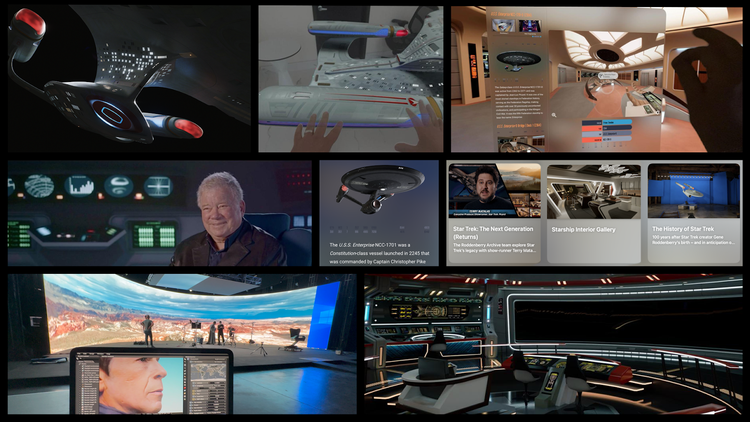
The Roddenberry Archive is a collaboration between OTOY, The Roddenberry Estate, and iconic “Star Trek” artists Denise Okuda, Mike Okuda, and Daren Docterman to preserve Gene Roddeberry's legacy in all media, but especially the history and cultural contribution of all eras of “Star Trek”. In a multi-pronged approach, the team is documenting “Star Trek” through interviews with cast and crew members, 3D scanning original props, costumes, and sets, making walk-through digital recreations of the sets from the series and movies, and producing documentary featurettes.
VAD supervisor Mark Spatny, senior hard surface artist Donny Versiga, and motion graphics artist Andrew Jarvis, are a few of the members creating this experience. Check out how they are using Adobe Creative Cloud to keep Gene’s legacy alive.
You can check out this project and immerse yourself into the world of "Star Trek" here .
How did you first get into VFX design? What drew you to it?
Spatny: I started working in live theater in the late ‘80s in Los Angeles as a set and lighting designer, and in the early ‘90s began using architectural previz software to design my scenery. I soon found that I enjoyed doing computer graphics as much as the physical theater production, so I transitioned into visual effects where I can combine all those skills. I have since worked on more than 50 TV series and films on-set and in post-production as a VFX supervisor and producer, specializing in both action/stunt/superhero VFX and complex set extensions.
Versiga: I got my start back in 2000 when I was 16 years old, creating my own custom levels in first-person video games like “Doom” and “Dark Forces”. At first it was just rearranging pre-existing assets in a level map, but soon I learned the basics of modeling, texturing, and lighting to achieve more customized results. After a year or so of being active in the video game modding community, I realized that I could merge this newfound hobby with my lifelong love of “Star Trek” by bringing to life my favorite “Trek” sets in a 3D digital world via real-time rendering.
Jarvis: I really took the long way around. I graduated with a degree in philosophy and psychology and started working as a cashier at a coffee shop doing web design jobs on the side. But each job was a little better than the last, and in my free time I was learning Adobe After Effects , 3D animation and ZBrush sculpting. One day a friend of mine met someone who did screen graphics for film and television, he gave me their number, and I never looked back.
What was the inspiration behind the VFX work on this project? What were you trying to achieve?
Spatny: Space-themed TV shows have always been my passion ever since I was a kid — “Star Trek”, “Battlestar Galactica”, “Lost in Space”, “Stargate”, “Doctor Who”, and anime shows like “Space Battleship Yamato” and “Macross”. In 2018, as a member of the Television Academy board, I helped champion giving the “Star Trek” franchise the Academy’s Governors Award Emmy. So, I’m super excited to finally be working in that genre, helping preserve the history of a show I’ve loved for 50 years.
Versiga: My goal on the Roddenberry Archive is to not only simply create CG replicas of the sets and props of “Star Trek”, but also to immerse the end users in a highly detailed and exceptionally immersive virtual tour of some of the most beloved ships and settings of the fictional universe. I want users to feel like they are actually stepping onboard the “Enterprise” via the comfort of their digital devices, in awe of the degree of accuracy.

Image Source: The Roddenberry Archive
What Adobe tools did you use on this project and why did you originally choose them?
Spatny: Premiere Pro is a key editing platform for our documentaries and concept videos. Since we’re dealing with footage transferred to video across many eras and standards, we depend on Premiere Pro’s ability to easily handle a variety of video formats and standards natively.
Versiga: I am a huge fan of the Adobe Substance suite of Adobe tools, particularly Adobe Painter . I have used the tool for nearly a decade now to add more fidelity and customization to the materials I apply to my models. I originally started using it during the interview process for a job in the video game industry because I recognized that my biggest weakness in my skill set at that point was texturing. I learned via the official tutorials on YouTube and fell in love with the incredibly powerful program. Since then, I’ve been an advocate of Painter in every job I’ve had, even giving tutorials and lessons for those new to the software.
Jarvis: Adobe Illustrator is where I spend my most time, but I also use Adobe Photoshop and After Effects. I’ve been using the Adobe suite as an FUI (fictional user interface) designer for nearly a decade now so it was the natural choice.
How did you begin this project? Can you talk about the collaborative process with the art department teams from the TV shows and films, and the process of creating your work from start to finish?
Spatny: The Archive is a decades-long passion project from Jules Urbach, the CEO of OTOY and the Roddenberry Estate. The CG team currently consists of artists in 6 countries, some of whom previously worked on Trek series and games. They work in a variety of DCC tools, and “Star Trek” art department legends Denise and Michael Okuda and Daren Dochterman review and approve all the assets we recreate for authenticity. We work mostly from publicly available reference sources such as screen grabs from the series, blueprints and technical drawings that have been published, and photos from the internet. We also have teams that work with private collectors to scan original props and costumes, and we can scan actors in our Lightstage capture facility in Los Angeles, CA.
Eventually, the finished models are converted to ORBX files to render on the Render Network , a decentralized high performance GPU computing platform. Real-time environments that users can explore are rendered on Amazon cloud servers and streamed to user’s local devices, such as the Apple Vision Pro, via OTOY’s X.IO streaming service.
Describe your favorite piece or component of the project. How did it come together and how did you achieve it?
Versiga: My favorite piece so far that I’ve created for the Roddenberry Archive would have to be the “Enterprise” — a bridge scene at the very end of “Star Trek IV: The Voyage Home”. Fans were only provided with a glimpse of this new bridge in the film, but we knew the set was a heavy redress of the bridge set seen in the preceding three films. However, the big unknown factors were the details of the hundred or so display graphics that adorned the bridge’s control consoles, of which only a handful were ever seen on screen. Fortunately, Mike Okuda was able to provide us with a copy of the original overview document of the displays that he created during his work on the film, which I used as a guide for creating our digital representations of each display in Adobe Photoshop and Illustrator. It was a huge honor for me to work on that project, as for the first time we were able to provide fans with an accurate representation of the new “Enterprise” bridge set from that film.
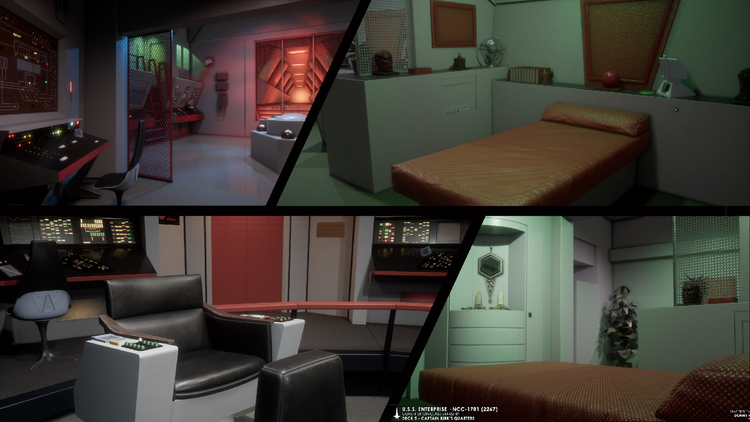
What were some specific challenges you faced? How did you go about solving them?
Spatny: Because our artists come from different backgrounds and industries, they use a variety of workflows and tools. One of my biggest challenges ahead is helping standardize procedures and simplify communication with the international team. That way, we can more easily scale the team and pivot our work to new platforms, using the best practices I’ve learned from the VFX companies I’ve worked with previously.
If you could share one tip about any or multiple Adobe tools you used, what would it be? (e.g. favorite Photoshop/AE/Premiere Pro “hack”)
Spatny: Every week we have a 3-hour art review session with Daren, Mike, and Denise, and sometimes the notes come in hot and fast. We record the sessions and then use Premiere Pro’s transcription tool, Speech to Text , to help gather and summarize the most important points to relay to our art team. One advantage of this over other transcription tools is that it works on my local machine, not in the cloud, so it has no security issues. That’s a huge plus for companies that depend on proprietary IP.
Versiga: When I first started using Adobe Substance Painter, I was excited at the ease of adding things like dirt and edge wear to my models’ textures, so much so that I overused it in my early days. I’ve since learned to make my application of those effects far more subtle. For instance, if I’m modeling a clean Starfleet prop, I’ll add very subtle roughness variation in the form of light scratches, smudges, and fingerprints to make them appear only slightly used and have a level of realism for up-close inspection. On the other hand, I’ll save the heavier rust, metallic edge wear, dirt, and grime effects for the Klingon props and sets.
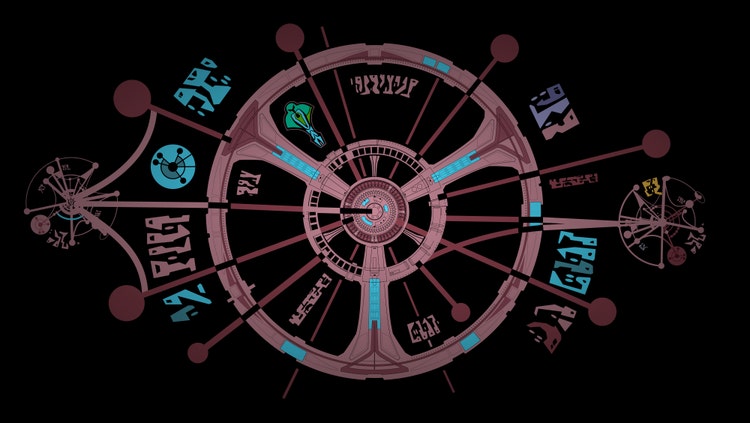
Image Source: The Roddenberry Archive.
Who is your creative inspiration and why?
Spatny: I keep David Mack’s “Kabuki” comic books in my office. He’s a brilliant artist who sometimes uses wildly different art styles on every page of his comic. It’s a reminder that we always need to be innovating in both design and technical approaches in our industry. You can never be satisfied with doing the same thing the same way twice.
Jarvis: For this project, it’s got to be Michael Okuda. His dedication to the franchise and the consistent design style he brought to the screen graphics made “Star Trek” such a cohesive universe. His work really helped spark my interest in digital art as a boy. Decades later it would be my honor to collaborate with him on “Star Trek: Picard”, and now at The Roddenberry Archive.
What’s the toughest thing you’ve had to face in your career and how did you overcome it? What advice do you have for people aspiring to get into the VFX space?
Jarvis: Creating screen graphics for on-set playback can be a very stressful job. In many ways, it’s more difficult than post VFX because you have to be ready for the day of shooting instead of doing your work after the scene is shot. You’ll get conflicting feedback from multiple departments, day-of requests from set, and ridiculous deadlines. My advice to anyone who wants to get into VFX is to just do it. Don’t wait for someone to hire you, just start making things. The barriers to creating your own content have never been lower, and with free software you can create really polished work without a formal education. Put something out that shows off your style and expertise and don’t be afraid to reach out to people who are doing the kind of work you’d like to be doing.
Share a photo of where you work. What’s your favorite thing about your workspace and why?
Spatny: Working from my home office in L.A. full-time now is a huge improvement over filming on a frozen lake in Canada or at night in pouring rain in Wales. My favorite thing about my home office is my signed photo of the “Star Trek: The Next Generation” cast hanging over my desk.
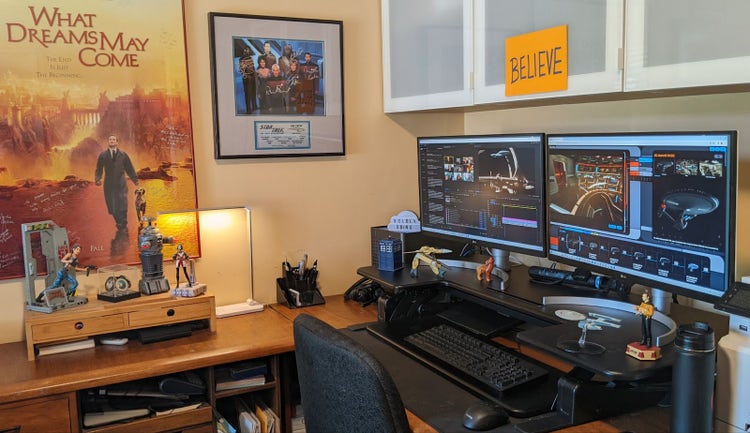
Image Source: VAD Supervisor Mark Spatny
Versiga: My favorite thing about where I work is that it’s from home. Although I miss the social component of working in an office, there’s a very comforting quality to working from home, and I find that I’m able to maintain a greater degree of concentration while I work compared to an office environment.

Image Source: Senior Hard Surface Artist Donny Versiga
Jarvis: That would of course have to be my framed poster of Christopher Cushman’s iconic “Enterprise D” cutaway poster that hung on my bedroom wall all through grade school.

Image Source: Motion Graphics Artist Andrew Jarvis.
https://blog.adobe.com/en/publish/2024/03/05/diving-into-premiere-pro-with-editor-post-producer-erick-sasso-maxines-baby-tyler-perry-story
https://blog.adobe.com/en/publish/2024/03/14/editing-amazon-primes-invincible-premiere-pro-supervising-editor-luke-asa-guidici
https://blog.adobe.com/en/publish/2024/03/12/editor-patrick-walsh-creating-sxsw-film-the-uninvited-adobe-premiere-pro

Celebrating Gene Roddenberry's 100th Birthday
Rod roddenberry on what all of us have learned from star trek..
Posted August 19, 2021 | Reviewed by Jessica Schrader
- Gene Roddenberry's vision of a better future for humanity in Star Trek is a hopeful message that is more relevant than ever today.
- Star Trek's emphasis on empathy, respect for difference, and the importance of working together for good continue to inspire the show's fans.
- Gene's son Rod Roddenberry shared his thoughts on what makes Star Trek special on his father's 100th birthday.
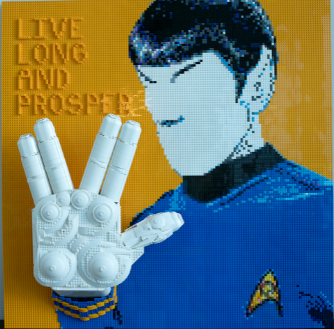
When many people think of fans, they think of Star Trek. The long-lived franchise, which includes 10 television shows and 13 feature films to date, drew passionate viewers from its beginning over 50 years ago, and continues to attract new admirers. The show and its human and alien characters inspired some of the first fan conventions. A letter-writing campaign to the network was the first successful viewer-led endeavor, earning the original series another year on television. The stereotype of fans, for many people, is someone dressed as a Klingon at a Star Trek convention.
While that stereotype is not entirely positive, the impact that Star Trek has had on its fans has been. Today would have been the 100th birthday of Star Trek’s creator, Gene Roddenberry, who died decades ago, but whose vision has lived on. Gene created a show that was groundbreaking in many ways—it truly did "boldly go where no one has gone before." He insisted on a racially diverse cast with women in positions of power, and used science fiction to explore social issues that were risky to tackle directly, always hanging onto a hopeful vision of the future where humanity would solve the problems of racism, sexism, xenophobia , prejudice , and stigma .
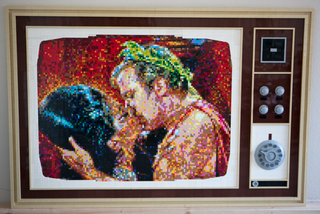
The show inspired its fans to adopt a similarly hopeful vision of the future—and to work towards making that future a reality. In return, Gene was inspired by the show’s fans, who he felt embodied the ideals and aspirations he held for humanity. Decades later, Gene’s son Rod Roddenberry set out to make a documentary film about Star Trek and what made it so special. He discovered that the show has had a real-life positive impact on many people, from inspiring them to tap into their creativity , to pursuing professions in engineering and astrophysics, to finding hope to keep going. In contrast to negative stereotypes, the picture Rod paints of fans in that film is as positive and hopeful as his father’s vision of humanity was.
For the past several months, Roddenberry Entertainment, headed up by Gene’s son Rod, has been celebrating his centennial by sharing how the show has had an impact, including #talkTREK on social media with some of Gene’s most inspiring quotes and #seeTREK, with art and creativity inspired by the show all over the world (with some examples included in this post). In the midst of a pandemic, when many of us are taking solace in favorite television shows and books and films, Star Trek and its message of hope and belief in science has more resonance than ever. I spoke to Rod Roddenberry about why Star Trek has remained so popular, what its fans have learned from the show, and what we can all learn from it.
Rod : Star Trek’s backbone philosophy is IDIC—Infinite Diversity in Infinite Combinations. The idea is that we’re never going to evolve intellectually until we realize that it is the differences between us that are what are special, and learning about those differences and growing from them is how we make the Star Trek future a reality.

In Star Trek, they weren’t just out in space finding aliens that looked weird, they were trying to find intelligent species that looked at the universe in a different way. Because they knew that any life form, on earth or somewhere else, that had a unique perspective was something we could learn from. We didn’t have to agree with it, we didn’t have to think it was right, but to hear a different perspective helps us grow as a person. We’ve got to be listening. If we don’t, if we live in our bubbles, we will not get any further than we are right now. I’m doing this to celebrate my father’s 100th birthday but not just the man who passed away—it’s the ideas that are infused into Star Trek, to get those ideas back out there. Our society needs it desperately.
Rod also said he learned a lot about his father from making the Trek Nation documentary, which helped him with his own process of grieving the loss of his dad. Sharing some of his father’s viewpoints, which are also touchstones for Star Trek fans, allowed him to feel closer to his enigmatic but busy father. One of those touchstones is the importance of empathy.
Rod : Right now in this world, what I think we need is a lot more empathy. And by empathy I mean not sympathy, not feeling bad for someone, but truly trying to understand them. Trying to step out of yourself and see them from a different point of view. Which Star Trek, when it was at its best, did that.
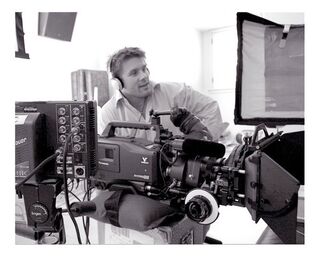
Empathy is not always easy, something that Star Trek also depicted over the decades. Understanding that we are all shaped by our experiences, and sometimes that leaves us with fears and insecurities and even prejudices, can be the basis for empathy.
Rod : It’s really a paradigm shift, and if we can all start to do that more often—it’s not going to happen overnight—but if we can all slightly increase that in ourselves, I think we will advance forward faster as a species.

Gene Roddenberry would definitely agree with his son.
Over the course of more than half a century, Star Trek is a striking example of how popular media can have a significant impact on fans and on the broader culture. There are many fans who have become scientists or writers or explorers of some kind themselves, following the show’s example. Star Trek’s underlying themes, from encouraging a quest for knowledge and a belief in science, to the need for empathy and acceptance of difference, have also shaped its viewers.
In fact, a recent study of the Star Trek series and films found that the franchise has not only included issues that were socially relevant over the past 50 years, but that its depiction of psychological disorders and treatments changed over time as well. Mental health issues, the study found, were portrayed more and more realistically over the course of the series and films. Popular media has a significant impact on how we think about aspects of our lives, so Star Trek has done its part to reduce stigma and encourage people to get treatment when needed.
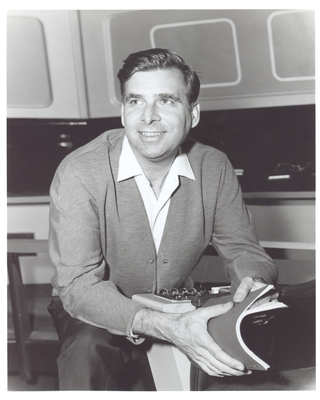
Gene Roddenberry, with his determination to keep improving humanity and the universe, and his emphasis on self improvement, would have been proud.
Happy centennial, Mr. Roddenberry!
Basilowski, et al. (2020). From Bones to brain: 50 years of Star Trek and changes in the stigmatization of psychological disorders. Current Psychology , 39: 1705-1714. https://doi.org/10.1007/s12144-018-9868-9

Lynn Zubernis, Ph.D. , is a professor at West Chester University in Pennsylvania. Her new book is There'll Be Peace When You Are Done.
- Find a Therapist
- Find a Treatment Center
- Find a Psychiatrist
- Find a Support Group
- Find Teletherapy
- United States
- Brooklyn, NY
- Chicago, IL
- Houston, TX
- Los Angeles, CA
- New York, NY
- Portland, OR
- San Diego, CA
- San Francisco, CA
- Seattle, WA
- Washington, DC
- Asperger's
- Bipolar Disorder
- Chronic Pain
- Eating Disorders
- Passive Aggression
- Personality
- Goal Setting
- Positive Psychology
- Stopping Smoking
- Low Sexual Desire
- Relationships
- Child Development
- Therapy Center NEW
- Diagnosis Dictionary
- Types of Therapy

Understanding what emotional intelligence looks like and the steps needed to improve it could light a path to a more emotionally adept world.
- Coronavirus Disease 2019
- Affective Forecasting
- Neuroscience

‘Star Trek’: Rod Roddenberry on Keeping His Father Gene’s Vision for the Franchise Alive
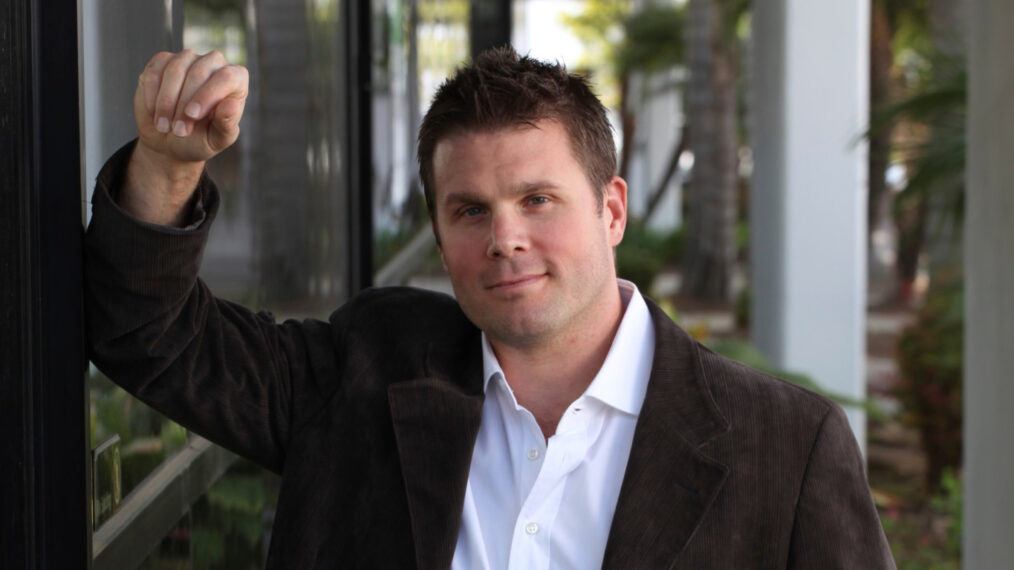
- William O’Connell Dies: ‘Star Trek’ Villain & Clint Eastwood Foil Was 94
- Michelle Hurd Talks ‘Star Trek: Legacy’ Hopes & Ponders ‘SVU’ Return
He is the keeper of the flame. Eugene “Rod” Roddenberry , the sole offspring of Star Trek creator Gene Roddenberry and actress Majel Barrett (Nurse Christine Chapel), took his sweet time appreciating the world into which he was born. Truth be told, the younger Roddenberry had no real interest in Star Trek when he was growing up and much preferred to watch Knight Rider ! But now, at 42, he is proudly preserving his late parents’ legacy and has forged a remarkable connection with fans of the franchise.
Not only has Roddenberry launched Project 366, a social media hub offering free access to rare, never-before-seen Trek memorabilia from the family vaults, he’s also one of the executive producers of the new CBS Star Trek: Discovery series, coming in 2017. We spoke with Roddenberry about the prime directive that guides his every move.
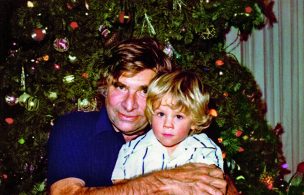
Rod with dad Gene Roddenberry in the ’70s.
Your trek to Star Trek was a slow and circuitous one. What took you so long to embrace the franchise? What I embrace is not so much the franchise but the inspiration behind it—that we can work together as a species and create a better and more hopeful future. It’s not that I don’t care about Star Trek or Kirk or Spock or the Enterprise , or the follow-up series or the movies. I certainly do care about them. But that is not my focus. My family doesn’t own Star Trek . It’s a CBS thing now. We can’t call the shots. What I care about is keeping my dad’s vision vital in any way I can.
What’s your earliest memory of Star Trek ? It’s very cute. [ Laughs ] Well, it’s very cute to me, anyway. My father had a blooper reel of actor screwups that he’d show at Star Trek conventions, and he’d play it for me on the projector in his office at home, and I would lay on the floor giggling like crazy. Beyond that, it’s hard to say when Star Trek really came into my consciousness. I used to watch The Next Generation , mostly because my father put me to work there as a production assistant when I was 13.
RELATED: As Star Trek Turns 50, Gene Roddenberry’s Vision Endures
Did you feel pressured by your parents to go into the business? I don’t know that I’d call it pressure, though I did a bunch of commercials when I was a little kid and couldn’t act to save my life. [ Laughs ] And I still can’t! I guess you can say I was forced to work summers at the production office. My father was trying to teach me how to be responsible and earn a living, but I really wanted to be playing with my friends. I’m glad for the experience, but at that age I didn’t take advantage of the opportunity to really learn anything about the family business.
Do you regret that? It would be too much to say I regret it. I forgive myself because I was just a kid. But I now see what I missed.
What changed for you? Why did you decide to pick up the Roddenberry torch? I was 17 when my father passed away and it was only then that I started to pay attention to what he had created. It was just such a raw, tender time for me, and I guess it left me more open to understanding what my father was all about and how he had touched so many lives. It’s as if his death shocked me into awareness. I saw that his millions and millions of fans had connected with Star Trek in a way I never did, and I needed to know more about that. I listened to the most incredible stories of people who were able to move beyond their physical disabilities or heal from a rough childhood because of how Star Trek inspired them and encouraged them to believe in themselves. I was so moved by that! I had grown up loving Knight Rider and Starsky & Hutch , which were great shows, but they didn’t change lives.
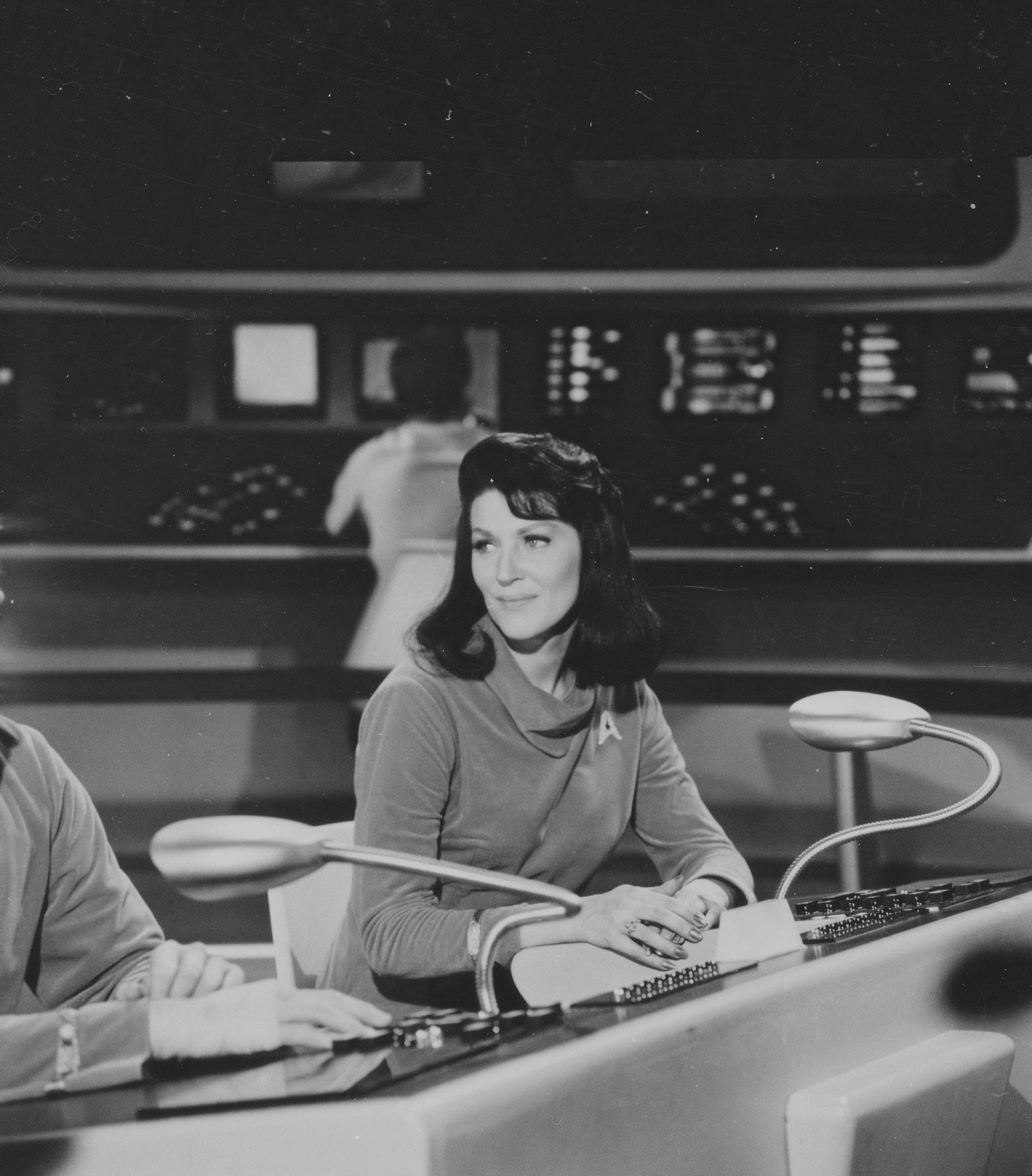
Majel Barrett in the first Trek pilot, “The Cage.” Barrett was originally cast as the First Officer—aka Number One—but the network nixed it.
Didn’t your mom officially woo you into the fold with a job on Earth: Final Conflict ? Yes. That was one of my father’s unproduced series ideas, which my mother had pitched after his death and sold into syndication. [The Canadian-produced series aired from 1997 to 2002.] I was in my last year at Hampshire College and the show was going to offer me an associate producer credit even though I had no experience. I didn’t want the title or the responsibility, so I signed on as a technical adviser.
Did you see yourself as a protector of your dad’s vision? As I read the scripts, I’d find myself thinking about the characters with my father in mind and asking questions like, “Should this guy really be shooting first, or should he try to communicate?”
RELATED: How Star Trek Has Been Able to Live Long and Prosper For 50 Years
It’s been said that the Trek era can be divided thematically—pre-Picard and post-Picard—with the later spinoffs venturing from your father’s philosophy of inclusivity and nonviolence. By the time we get to Enterprise , Captain Archer is seen torturing a terrorist with his own hands. Thoughts on this? My father’s Star Trek showed humanity of the future doing things differently than we do today, while the iterations of Trek that came after his death felt more like how today’s humanity deals with conflict—by retaliating, dropping bombs, whatever. My father was always interested in how we might respond to problems in a better way. Questions about that came up so often while I was at Final Conflict that I created a website called the Gene Roddenberry Philosophy Sphere. I was on it every day talking to fans and asking them, “What is it about Star Trek that inspires you?” That’s when the growth really happened for me. Working on Final Conflict and getting to know all the people who were excited to be part of a new Gene Roddenberry project was amazing and a real eye-opener. It wasn’t just a job for them. They saw it as a once-in-a-lifetime chance to connect with him. He was like a Greek god to so many people.
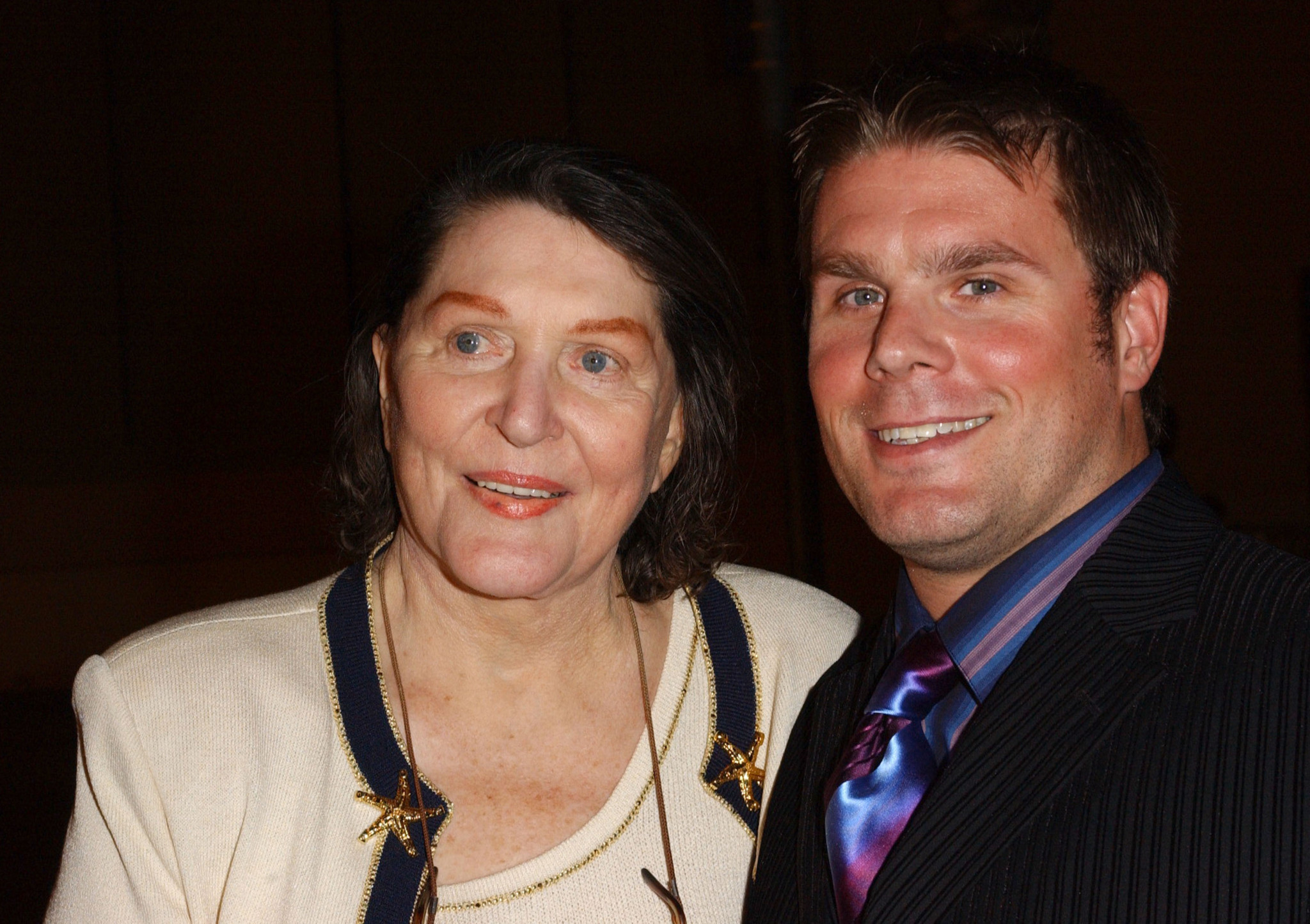
How do you hang on to your dad’s rosy vision of tomorrow in a world that’s increasingly dismal and scary, without it seeming like Roddenberry’s Folly? I don’t have the answer. In 2010, we established the Roddenberry Foundation [ which has funded a variety of causes, from sustainable wastewater treatment technology to stem cell research ], and we’re still young and naive and believe we can change the world in some small way. The great thing about the original Star Trek is that, on the surface, it was a show big on diversity. There was a black person and a Japanese person and a Russian person on the bridge, and that was groundbreaking. But what was really groundbreaking was the fact that Captain Kirk and his crew were out there in space seeking new ideas. New ideas! In today’s society, that’s something many people fear. But it’s the backbone of Star Trek .
Your son, Zale, is turning 3. Will you let him discover Trek in his own way or will you guide him to his legacy? I hope he will discover it the same way I did—in his own time and in his own way. I want to encourage his passion, whether that passion is to become an astronaut or a ballet dancer or a vacuum-cleaner repairman. It’s all creative. It’s all important. If my son embraces Starfleet, great, but if he doesn’t care about it, that’s OK too. It’s more important to me that he be passionate about the world, and that he use his gifts to make it a happier, healthier place. That’s the greatest way to honor my father.
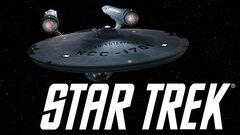
Star Trek where to stream
Gene Roddenberry
Majel barrett, rod roddenberry.

- More to Explore
- Series & Movies
Published May 12, 2021
Celebrate the Run Up to Gene Roddenberry's 100th Birthday with #talkTrek
Star Trek stars and many more partner with Roddenberry Entertainment to recite 100 of Gene Roddenberry’s inspirational & insightful quotes in honor of late creator’s 100th birthday

StarTrek.com
As part of the yearlong #thinkTREK campaign, honoring Star Trek creator and visionary Gene Roddenberry, over sixty notable celebrities, creatives, and scientific leaders have collaborated with Roddenberry Entertainment to share 100 of Mr. Roddenberry’s most impactful quotes over the course of the 100 days leading up to his 100th birthday on August 19, 2021. As part of the sub-campaign dubbed #talkTREK, the videos will post daily across Roddenberry Entertainment’s social media platforms, including Facebook , Instagram , and Twitter , beginning on May 12.
Accompanying the video quotes, is a 100 episode, limited series, daily podcast called “Quoting Gene Roddenberry” hosted by famed blogger Trent Vanegas (Pink is the New Blog) and actress Rachel True ( The Craft ). Each short-form episode begins with an audio reading of the day’s quote from the video campaign, followed by a lively discussion between our hosts and that week’s guest host. The conversations are invigorating deep dives into the meaning, history, ethos and impact of Gene Roddenberry’s words. Currently, guest hosts include the actors Ming Chen and Mary Chieffo, Oscar-nominated screenwriter Josh Olson, and more.
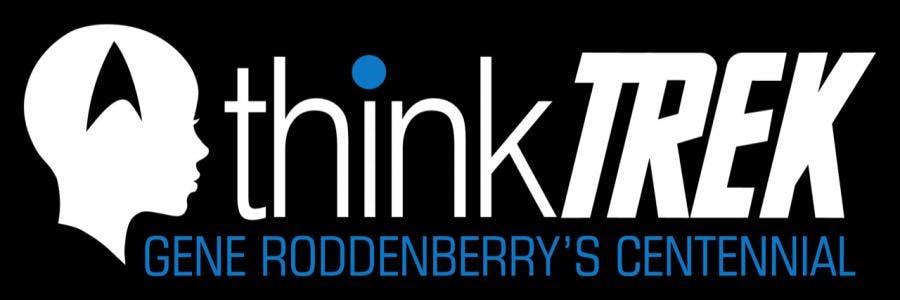
During the same 100 days as our videos, and coordinated to match the video quotes released, Amazon’s Alexa will be able to respond to the prompt “Alexa, play the Rodenberry daily quote?” – providing that day’s quote through the Alexa voice app.
“My father, Gene Roddenberry, was an ordinary man with an extraordinary vision for the world – one of unconditional love, diversity, and unity of all people – and that vision is shown through not only Star Trek, but through the words he spoke in his lectures, his interviews and his writings. To have members of the Star Trek franchise and celebrity fans bring those words back to life is a very exciting way to celebrate a momentous year in his history,” says Rod Roddenberry.
Noteworthy participants in the #talkTREK campaign include Bill Nye, LeVar Burton ( Star Trek: The Next Generation ), George Takei ( Star Trek: The Original Series ), Michelle Yeoh ( Star Trek: Discovery ), Alison Pill ( Star Trek: Picard ), Santiago Cabrera ( Star Trek: Picard ), Michelle Forbes ( Star Trek: The Next Generation ), Jonathan Frakes ( Star Trek: The Next Generation , Star Trek: Picard ), Jerry O’Connell ( Star Trek: Lower Decks ), Kevin Smith ( Clerks, Chasing Amy, Comic Book Men ), Paul Sorvino ( Goodfellas, Nixon ), Brenda Strong ( Star Trek: The Next Generation, Desperate Housewives ), and many more.
#talkTREK is one component of a yearlong, multi-faceted celebration of Roddenberry’s creative genius and his contributions to culture and the humanities. In an effort to promote Roddenberry’s ethos of kindness, inclusivity, and always working to better yourself, Roddenberry Entertainment and Star Trek fan communities are encouraging everyone to #thinkTREK: to see and act on Star Trek ’s philosophies in our own personal relationships, in daily life, and in the world.
A Special Message for Star Trek Fans
The #thinkTREK campaign initiatives include not only #talkTREK but also #seeTREK, #beTREK, and #makeTREK, each playing out online and across social media. Thousands of Star Trek fans have engaged with the #seeTREK and #beTREK campaigns by submitting examples of where they see Star Trek out in the world (like in a pie presented to look like the Starship Enterprise ), and of real-life people and stories who represent being Star Trek , which means reflecting the values embraced by the series, like an astronaut who achieved his dreams after starting out in life as a farmworker. In #buildTREK, master builder Samuel Hatmaker is designing and building a series of four iconic moments from the series out of toy bricks, the first of which was Captain Kirk and Lieutenant Uhura’s Kiss, which was shared by Collider .
For more information on Roddenberry Entertainment and their centennial celebrations, please visit Roddenberry.com/thinktrek, or follow their social media accounts on Facebook , Instagram , and Twitter . Also this year, The Roddenberry Foundation has donated $100,000 to the Comic-Con Museum to support renovation and programming plans, recognizing the Museum’s efforts to highlight inclusivity, innovation, and creativity while honoring Gene Roddenberry’s legacy.
A Rare Letter From Gene Roddenberry
Get Updates By Email
- The Inventory
The Long-Lost Original Star Trek Enterprise Model Is Heading Home
After going missing from gene roddenberry's collection half a century ago, the very first model of the starship enterprise is back in his family's hands..
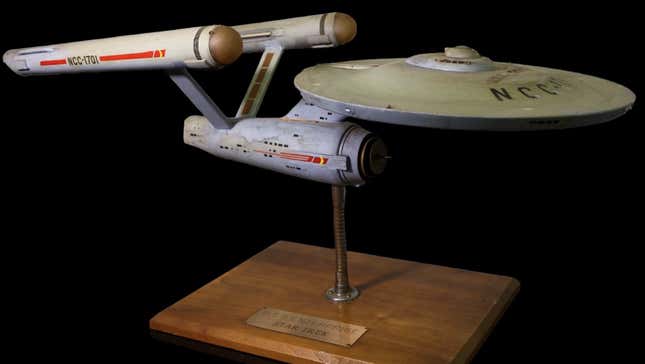
It was our first look at the vision of Star Trek ’s future: the original ship model of the USS Enterprise that zoomed across screens in the show’s opening credits. But after being loaned out during the making of Star Trek: The Motion Picture , it had gone missing... until now.
Related Content
After, bizarrely, it randomly turned up on eBay last fall—the first time it had been seen publicly since it had gone missing —the original model of the Enterprise made for the Star Trek pilot “The Cage” and shooting its opening titles sequences is now back in the hands of the Roddenberry estate. After the eBay seller quickly learned just what they had their hands on, the model was handed over to Heritage Auctions for authentication, and when it was confirmed to be the long-lost Trek icon , held in storage until it could be handed over to Rod Roddenberry this past weekend. “After five decades, I’m thrilled that someone happened upon this historic model of the USS Enterprise . I remember how it used to adorn my dad’s desk,” Roddenberry said in a statement provided over email. “I am tremendously grateful to Heritage Auctions for facilitating the return of this iconic piece of Star Trek history to my family.”
The original model served as the prototype for what would become the primary original 11-foot shooting model of the Enterprise , which has had a similarly long and winding history on display at the Smithsonian’s National Air and Space Museum —it was damaged, then tweaked in an a restoration that was ultimately undone to restore it to its original glory just in time for Trek ’s 50th anniversary back in 2014. Like its successor, the newly recovered model will find a life outside of a private collection: Roddenberry Entertainment intends to put it on public display.
“I can’t wait to figure out how we are going to share it with my extended family, Star Trek fans around the world,” Roddenberry’s statement concluded. “We look forward to making that announcement.”
Want more io9 news? Check out when to expect the latest Marvel , Star Wars , and Star Trek releases, what’s next for the DC Universe on film and TV , and everything you need to know about the future of Doctor Who .
Advertisement
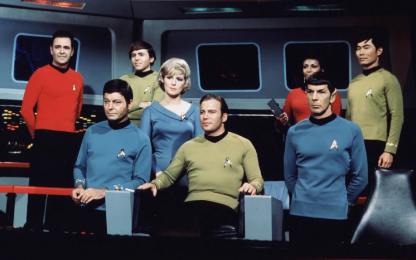
Whether you’ve only heard of but never seen “The Wrath of Khan,” binged The Next Generation, made a Vulcan salute, or ever wondered what William Shatner did before his Priceline commercials, you’ve been touched in some way by Star Trek.
This is not surprising. The original Star Trek series premiered in September 1966 and has spawned over 700 TV episodes, 14 movies and comic books, animated series, countless homages, conventions, and a global following.
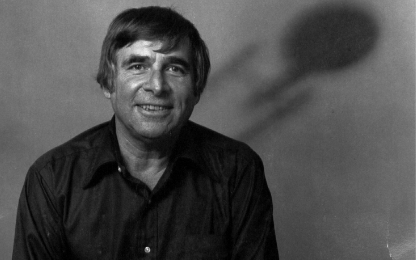
Its enduring resonance is a testament to Gene Roddenberry’s vision for a future where diversity and tolerance are encouraged and in which inclusivity and equality are the norm. In the future, the Star Trek creator believed, the human potential to be “remarkable” would yield a better, fairer world — “a world with no hunger, poverty, prejudice, or greed”. Since it first aired over five decades ago, Star Trek has continued to offer a unique brand of science fiction that invites us to “think, question, and challenge the status quo” with the intention of creating “a brighter future”.
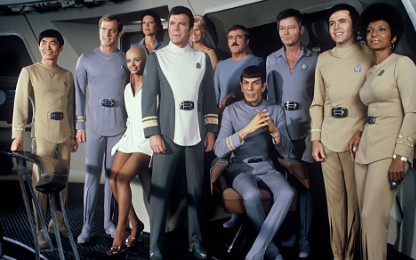
At The Roddenberry Foundation, we are committed to advancing Gene’s faith in humanity by finding and supporting remarkable people and organizations who can disrupt existing dynamics, challenge old patterns of thought, and discover new ways to help us move towards a better future.
Advertisement
Supported by
Original ‘Star Trek’ Enterprise Model Is Found After Being Missing for Decades
The 33-inch model surfaced on eBay after disappearing around 1979. An auction house is giving it to the son of Gene Roddenberry, the creator of “Star Trek.”
- Share full article

By Emily Schmall
The first model of the U.S.S. Enterprise, the starship that appeared in the opening credits of the original “Star Trek” television series , has been returned to Eugene Roddenberry Jr., the son of the creator of the series, decades after it went missing.
“After a long journey, she’s home,” Mr. Roddenberry wrote on social media on Thursday.
For die-hard Trekkies, the model’s disappearance had become the subject of folklore, so an eBay listing last fall, with a starting bid of $1,000, didn’t go unnoticed.
“Red alert,” someone in an online costume and prop-making forum wrote, linking to the listing.
Mr. Roddenberry’s father, Gene Roddenberry, created the television series, which first aired in 1966 and ran for three seasons. It spawned numerous spinoffs, several films and a franchise that has included conventions and legions of devoted fans with an avid interest in memorabilia.
The seller of the model was bombarded with inquiries and quickly took the listing down.
The seller contacted Heritage Auctions to authenticate it, the auction house’s executive vice president, Joe Maddalena, said on Saturday. As soon as the seller, who said he had found it in a storage unit, brought it to the auction house’s office in Beverly Hills, Calif., Mr. Maddalena said he knew it was real.
“That’s when I reached out to Rod to say, ‘We’ve got this. This is it,’” he said, adding that the model was being transferred to Mr. Roddenberry.
Mr. Roddenberry, who is known as Rod, said on Saturday that he would restore the model and seek to have it displayed in a museum or other institution. He said reclaiming the item had only piqued his interest in the circumstances about its disappearance.
“Whoever borrowed it or misplaced it or lost it, something happened somewhere,” he said. “Where’s it been?”
It was unclear how the model ended up in the storage unit and who had it before its discovery.
The original U.S.S. Enterprise, a 33-inch model, was mostly made of solid wood by Richard C. Datin, a model maker for the Howard Anderson Company, a special-effects company that created the opening credits for some of the 20th century’s biggest TV shows .
An enlarged 11-foot model was used in subsequent “Star Trek” television episodes, and is now part of the permanent collection of the Smithsonian National Air and Space Museum , where it was donated by Paramount Studios in 1974.
Mr. Roddenberry, who said he gave the seller a “reward” for its recovery but did not disclose the terms, assembled a group of “Star Trek” production veterans, model makers and restoration specialists in Beverly Hills to authenticate the find.
The group included a “Star Trek” art supervisor, Michael Okuda, and his wife, Denise, an artist on “Star Trek” television series and films, and Gary Kerr, a “Trek x-pert” who served as technical consultant for the Smithsonian during a 2016 restoration of the 11-foot model.
“We spent at least an hour photographing it, inspecting the paint, inspecting the dirt, looking under the base, the patina on the stem, the grain in the wood,” Mr. Roddenberry said.
“It was a unanimous ‘This is 100 percent the one,’” he said.
Gene Roddenberry, who died in 1991 , kept the original model, which appeared in the show’s opening credits and pilot episode, on his desk.
Mr. Kerr compared the model to 1960s photos he had of the model on Mr. Roddenberry’s desk.
“The wood grain matched exactly, so that was it,” he said on Saturday.
The model went missing after Mr. Roddenberry lent it to the makers of “Star Trek: The Motion Picture,” which was released in 1979, Mr. Maddalena said.
“This is a major discovery,” he said, likening the model to the ruby slippers from “The Wizard of Oz,” a prop that was stolen in 2005 and recovered by the F.B.I. in 2018, and that Heritage Auctions is selling.
While the slippers represent hope, he said, the starship Enterprise model “represents dreams.”
“It’s a portal to what could be,” he said.
Emily Schmall covers breaking news and feature stories and is based in Chicago. More about Emily Schmall
Explore More in TV and Movies
Not sure what to watch next we can help..
As “Sex and the City” became more widely available on Netflix, younger viewers have watched it with a critical eye . But its longtime millennial and Gen X fans can’t quit.
Hoa Xuande had only one Hollywood credit when he was chosen to lead “The Sympathizer,” the starry HBO adaptation of a prize-winning novel. He needed all the encouragement he could get .
Even before his new film “Civil War” was released, the writer-director Alex Garland faced controversy over his vision of a divided America with Texas and California as allies.
Theda Hammel’s directorial debut, “Stress Positions,” a comedy about millennials weathering the early days of the pandemic , will ask audiences to return to a time that many people would rather forget.
If you are overwhelmed by the endless options, don’t despair — we put together the best offerings on Netflix , Max , Disney+ , Amazon Prime and Hulu to make choosing your next binge a little easier.
Sign up for our Watching newsletter to get recommendations on the best films and TV shows to stream and watch, delivered to your inbox.
Screen Rant
How star trek discovery is embracing gene roddenberry's vision.
Star Trek: Discovery features a cast of characters even more diverse than Gene Roddenberry's original series (so please don't kill them off).
Star Trek debuted in 1966 with a cast that was practically unheard of in terms of diversity. True, it was headed up by white, straight (Kirk/Spock fanfiction notwithstanding) men, but the supporting cast was strikingly inclusive. For many sci-fi fans, this was the first time they'd felt represented within their favorite genre. Notably, Nichols was asked by Dr. Martin Luther King Jr. to continue on with the show rather than quit because she was a beacon of hope for audiences who longed to see themselves playing characters who were not maids. Astronaut Dr. Mae Jennison - the first African-American woman to go to space - was inspired as a little girl by seeing Nichelle Nichols as Uhura in Star Trek: The Original Series , and later went on to play a small role in an episode of Star Trek: The Next Generation at LeVar Burton's invitation.
Roddenberry's view of the future saw the barriers that divide society melting away in favor of a truly united society that looks to the future with hope, not fear. And that was reflected as much as possible in the Original Series, as well as following Trek ventures. Now, we get this generation's Trek series, Star Trek Discovery . This series is truly living up to the potential of Roddenberry's vision, while at the same time possibly throwing that vision into some danger.
Discovery released its first major look at the series at San Diego Comic Con, promising war with the Klingons and the invention of the warp drive as key elements of the plot. Still, it follows the mystery box attitude of most major franchises, and also keeps certain details under wraps. We do know it will retcon one very important family ” Sarek (played this time around by James Frain), his wife Amanda, and their son Spock will be joined by Sarek and Amanda's adopted daughter Michael Burnham (Sonequa Martin-Green). Burnham will be the protagonist of the series, marking this as the first time an officer, rather than captain, has been the lead.
It also marks the first time that a black woman has been the lead of a Star Trek series. Most Trek leads have been white men; while there have been exceptions to the rule, four of seven Trek franchises have had white male leads. Martin-Green's casting proves that the Discovery writers are not thinking inside the box for this show. Instead, they are truly embracing diversity by casting a black woman in the lead role, a move that is truly progressive considering how white female leads are usually the ones hailed as feminist victories. This is a fresh move for Star Trek , and indeed for science-fiction, which still has trouble envisioning diverse heroes for mainstream products. Another notable casting choice is Michelle Yeoh as Captain Georgiou, captain of the U.S.S. Shenzou, and mentor to Burnham.
Anthony Rapp also joined the cast as the first major LGBT recurring character in Trek history - one with a promised love interest. Trek shook things up with the reveal that Sulu was gay in Star Trek Beyond , but there has yet to be a major LGBT character in one of the television shows. This is undiscovered territory for the franchise, and one that is a long time coming. Trek's inclusive nature points to the inclusion of LGBT characters, and who knows? Discovery could really shatter stereotypes by possibly including a trans or gender nonconforming character in the next season.
Showrunner Alex Kurtzman's reassurance that the writer's room is packed with Trek devotees who believe in Roddenberry's vision is clear in these casting choices. We are seeing a future that's diverse and without the same problems that plague modern society. Here, everyone can be a hero. Here, the future does not solely belong to white straight men but to everyone. And that's important. That is a realization of Roddenberry's dream, and the culmination of more than 50 years of progress. There is still ground to be broken, but this is a positive step in the right direction.
However, there is a cloud on the horizon of this utopian look at the future, and it's not the Klingons. It is the fact that the series is inspired by Game of Thrones in that major characters are in danger of being killed off, and indeed will be killed off. This is still unique enough that it's a shock for Trek fans. After all, only three major characters have ever been killed off throughout the entire 50+ year series. And honestly? That's probably for the best.
The question of whether or not Discovery taking a page from Game of Thrones ' book is a good thing is layered. First and foremost is the fact that not every show needs to massacre characters on the regular to be considered quality. Thrones and it's zombie counterpart The Walking Dead thrive on the shock and suspense of major character deaths, but that's because the worlds of their respective shows need to have major deaths in order to seem realistic. Trek might be firmly based on the science side of science fiction, but it is also supposed to be a utopian universe. Killing off too many characters might throw off the sense of hope that permeates the entire basis of the show. Red shirts may die for dramatic effect, but losing too many characters we know and love might be a step too far.
Secondly, the diverse cast of Discovery also makes the potentially fatal encounters a bit of an issue. This is not to say that characters of color, female characters, and LGBT characters can never be killed off of a series. That would be a ridiculous stance to take. But there are far fewer of them than there are white male characters, who often get plot armor. While Burnham will hopefully have plot armor as the main character, others such as Georgiou do not. Killing off, or rather fridging, important characters who serve as representation would be a step backwards. Again, these characters should not have plot armor simply based on their identity, but Discovery killing them off without consideration would be a sign of not caring about these characters. And to be fair, the most diverse Trek cast also being the one in the most danger is somewhat disheartening.
Star Trek has survived for over fifty years by spreading a message of hope and inclusivity. Discovery looks to be a new, exciting part of that legacy, but that legacy could be tainted if only women, characters of color, and LGBT characters die. The show does not need to be Game of Thrones in space, nor does it need to be The Walking Redshirts. Instead, it needs to focus on continuing the longstanding tradition of presenting a view of the future as it should be. In a world where politics are grim and the news is full of tragedy, audiences need an escape, and a view of the future that isn't as bleak as ours seems to be. Discovery has the chance to be that show, but it can't be if we spend each episode fearing for the lives of the main characters. Hopefully, reports of the deaths in the series are overblown, and instead we'll get the chance to see these characters survive and, more important, thrive.
Next: Tribbles Confirmed For Star Trek Discovery

Homecoming of an Icon: The Odyssey of the USS Enterprise Model from Star Trek
Posted: April 19, 2024 | Last updated: April 19, 2024
![Looking to the Stars As the USS Enterprise model prepares to embark on its next chapter, its legacy continues to inspire curiosity, wonder, and a sense of boundless possibility. In an ever-changing world, the enduring appeal of "Star Trek" and its iconic starship reminds us to embrace the spirit of exploration and boldly venture into the unknown. ]]>](https://img-s-msn-com.akamaized.net/tenant/amp/entityid/AA1nhJ9X.img)
Looking to the Stars
![Gratitude and Reflection Amidst the excitement surrounding the model's return, Eugene Roddenberry and Heritage Auctions express their appreciation for all involved in facilitating its journey home. Their collaborative efforts serve as a testament to the power of community, passion, and shared reverence for cultural heritage. ]]>](https://img-s-msn-com.akamaized.net/tenant/amp/entityid/AA1nhEsT.img)
Gratitude and Reflection
![Preserving a Cultural Artifact The restoration efforts underway for the USS Enterprise model signify a dedication to preserving not only a cherished artifact of science fiction history but also a cultural icon that has inspired millions around the globe. Plans to showcase the model in a museum setting offer enthusiasts and newcomers alike the opportunity to marvel at its craftsmanship and immerse themselves in the universe of "Star Trek." ]]>](https://img-s-msn-com.akamaized.net/tenant/amp/entityid/AA1nhzou.img)
Preserving a Cultural Artifact
![A Reunion of Generations As the model returned to the Roddenberry family's possession, it symbolized more than just a piece of memorabilia; it embodied a legacy of innovation, imagination, and the enduring spirit of exploration. Eugene Roddenberry's vision to restore and share the model with the public reflects a commitment to honoring his father's legacy and inspiring future generations of dreamers and adventurers. ]]>](https://img-s-msn-com.akamaized.net/tenant/amp/entityid/AA1nhBWg.img)
A Reunion of Generations
![A Twist of Fate on eBay Last fall, the unexpected occurred when the long-lost Enterprise model surfaced on the online marketplace eBay, sending shockwaves through the "Star Trek" community. Swift action by the sellers and collaboration with Heritage Auctions set the stage for its remarkable journey back into the hands of its rightful custodian, Eugene "Rod" Roddenberry, son of "Star Trek" creator Gene Roddenberry. ]]>](https://img-s-msn-com.akamaized.net/tenant/amp/entityid/AA1nhzoz.img)
A Twist of Fate on eBay
![The Legend of the Lost Model The first model of the USS Enterprise, a symbol of hope and exploration in the "Star Trek" universe, vanished from public view in the 1970s, leaving behind a trail of speculation and intrigue. Its absence from the spotlight only fueled its mystique, with fans pondering its fate and lamenting its absence from the annals of science fiction history. ]]>](https://img-s-msn-com.akamaized.net/tenant/amp/entityid/AA1nhzoD.img)
The Legend of the Lost Model
More for you.
20 of the world's richest people who you might not know are LGBTQ+
These Are the 18 Best-Behaved Dog Breeds You Can Own
Unplug These 29 Items That Hike Up Your Electricity Bill
Joe Biden Suffers Border Blow
The 16 worst-paying college majors, five years after graduation
Here’s When to Expect Cicadas If You Live in One of These 17 States
Is it okay leave your laptop plugged in all the time?
17 Jobs That Pay $25 an Hour to Work From Home
6 Hybrid Vehicles To Stay Away From Buying
Jayden Daniels gets angry at Washington improving J.J. McCarthy's chances to be the second-overall pick
17 High Protein Snack Ideas for When You’re Hungry
How To Remove Weeds From The Cracks In Your Driveway To Prevent Their Return
This type of supplement may increase heart disease risk, new study finds
7 coolest things to do with your old PC instead of throwing it away
The Undertaker Says Some Army Veterans Were Unhappy That He Inducted Muhammad Ali Into The WWE Hall Of Fame
The Coolest Car From the Year You Were Born (1945-1995)
Shohei Ohtani Rewrites MLB History on Sunday vs. Mets
20 Highest-Paying Jobs in Healthcare
The Only Way You Should Store Butter, According to Land O'Lakes
Carnival Cruise Line bans 1 onboard activity, but not another

COMMENTS
Since the debut of J.J. Abram's " Star Trek (2009)" film and the so-called NuTrek series, which air on the Paramount+ network, much has been written about Gene Roddenberry, and his vision ...
Gene Roddenberry at 100: The 'Star Trek' Creator Imagined a Glorious Future — and Our Fraught Present. On the occasion of Roddenberry's 100th birthday, his son Rod thinks his father's ...
Star Trek: Deep Space Nine challenged Gene Roddenberry's original vision for Starfleet by delving deeper into the consequences of Starfleet's actions, while still upholding its moral code. DS9 broke Gene Roddenberry's rule about no interpersonal conflicts between Starfleet officers by featuring a tense scene between Sisko and Picard, but ...
Eugene Wesley Roddenberry Sr. (August 19, 1921 - October 24, 1991) was an American television screenwriter and producer who created the science fiction franchise Star Trek. Born in El Paso, Texas, Roddenberry grew up in Los Angeles, where his father was a police officer.Roddenberry flew 89 combat missions in the Army Air Forces during World War II and worked as a commercial pilot after the war.
A Bold Vision: How Star Trek First Made It to the ... Creator Gene Roddenberry pitched his space-adventure series to the networks as a "Wagon Train to the Stars," a nod to the westerns that ...
By Niall Gray. Published Aug 2, 2022. Though the debate about Gene Roddenberry's original vision for Star Trek continues, it's missing the point: it really doesn't matter to the franchise. Despite discourse around how Gene Roddenberry would feel about the modern evolution of Star Trek, the creator's personal opinions are actually far less ...
In many ways, The Next Generation is also a more robust example of Star Trek creator Gene Roddenberry's humanistic vision of the future than its progenitor. Ironically, this is partly because he had less personal creative control over TNG; the executive producers and writing staff made TNG the vehicle for humanist ideas that it became.
That aspect is 100% on board with Gene Roddenberry's vision for Star Trek, which he sadly never got to see. Perhaps a good way of further honoring Roddenberry's memory is revisiting Risa in the future and making it a little bit more LGBTQ-friendly. After all, Paul Stamets, Hugh Culber, and the Kelvin-verse's Hikaru Sulu cannot be all the ...
On the 55th anniversary of Star Trek, Gene Roddenberry's son Rod Roddenberry, along with legendary actor George Takei (Hikaru Sulu) and Star Trek: The Next G...
Gene Roddenberry's vision spanned centuries. Some of the most powerful quotes from Star Trek creator Gene Roddenberry. Related. The Epic Voyage of Star Trek: The Cruise VII ... Happy International Women's Day from the Women of Star Trek. Star Trek Universe. 03:20. Day 6 and 7 of Star Trek: The Cruise VII. Star Trek Universe. 02:07. Day 5 of ...
2022 marks the year the Star Trek creator Gene Roddenberry would have turned 101, and though 30 years have passed since his death, it's fair to say the legacy he created for himself is thriving ...
Star Trek: Discovery is finally honoring Gene Roddenberry's vision of a sci-fi future in season 4. When Gene Roddenberry conceptualized Star Trek in the 1960s, he mapped out a very specific landscape for 23rd century man. One of Roddenberry's immovable tenets was how human civilization should've evolved beyond inner conflict, and this is why Star Trek: The Original Series threats came almost ...
The visionary creator of Star Trek, Gene Roddenberry, transcended the boundaries of conventional storytelling and left a permanent mark on the landscape of science fiction. Debuting on September 8, 1966, against the backdrop of the Cold War between the United States and the Soviet Union, the Star Trek boldly ventured into uncharted territory.
The Roddenberry Archive is a collaboration between OTOY, The Roddenberry Estate, and iconic "Star Trek" artists Denise Okuda, Mike Okuda, and Daren Docterman to preserve Gene Roddeberry's legacy in all media, but especially the history and cultural contribution of all eras of "Star Trek". In a multi-pronged approach, the team is ...
Key points. Gene Roddenberry's vision of a better future for humanity in Star Trek is a hopeful message that is more relevant than ever today. Star Trek's emphasis on empathy, respect for ...
Rod Roddenberry. He is the keeper of the flame. Eugene "Rod" Roddenberry, the sole offspring of Star Trek creator Gene Roddenberry and actress Majel Barrett (Nurse Christine Chapel), took his ...
Star Trek: The Next Generation fulfilled Gene Roddenberry's vision for a hopeful future, but Michael Dorn reminds everyone that Star Trek has room to tell all kinds of stories.Roddenberry created ...
Star Trek: Voyager 's departing showrunner Michael Piller wanted to reaffirm franchise creator Gene Roddenberry's vision in his last episode. Piller was an active part of Star Trek for most of the ...
As part of the yearlong #thinkTREK campaign, honoring Star Trek creator and visionary Gene Roddenberry, over sixty notable celebrities, creatives, and scientific leaders have collaborated with Roddenberry Entertainment to share 100 of Mr. Roddenberry's most impactful quotes over the course of the 100 days leading up to his 100th birthday on August 19, 2021.
After going missing from Gene Roddenberry's collection half a century ago, the very first model of the Starship Enterprise is back in his family's hands. It was our first look at the vision of ...
7 years before creating Star Trek, Gene Roddenberry pitched a TV series about Sam Houston, and his first-ever pitch document is explored by the Roddenberry podcast Gene-ology.Before producing Star ...
In the absence of Gene Roddenberry, his wife, Majel Barrett gave her own approval of Star Trek: Deep Space Nine with three appearances as Lwaxana Troi.Majel Barret's Lwaxana Troi even married Odo (Rene Auberjonois) in DS9 season 4. However, Barrett later wrote a letter to Star Trek Communicator magazine in 1999, in which she stated that the Dominion War was a departure from Gene Roddenberry's ...
The original Star Trek series premiered in September 1966 and has spawned over 700 TV episodes, 14 movies and comic books, animated series, countless homages, conventions, and a global following. Its enduring resonance is a testament to Gene Roddenberry's vision for a future where diversity and tolerance are encouraged and in which ...
Parmy Olson delves into the allure of Star Trek's utopian vision among tech innovators, contrasting it with today's challenges. While inspired by a future of abundance and self-improvement, tech's path has veered towards profit-driven pursuits, social media's impacts, and AI's ethical dilemmas. ... [Star Trek creator] Gene Roddenberry ...
"[Star Trek creator] Gene Roddenberry was able to show how we build a society that is better," Garry Tan, the CEO of the Valley's most important startup accelerator, Y Combinator, said on a ...
EXCLUSIVE: OTOY, Paramount Game Studios and The Gene Roddenberry Estate on Friday announced the launch of a Roddenberry Archive app for Apple's new spatial computing platform, the Apple Vision Pro ...
The 33-inch model surfaced on eBay after disappearing around 1979. An auction house is giving it to the son of Gene Roddenberry, the creator of "Star Trek." By Emily Schmall The first model of ...
How Star Trek Discovery is Embracing Gene Roddenberry's Vision. Star Trek: Discovery features a cast of characters even more diverse than Gene Roddenberry's original series (so please don't kill them off). Star Trek debuted in 1966 with a cast that was practically unheard of in terms of diversity. True, it was headed up by white, straight (Kirk ...
Eugene Roddenberry's vision to restore and share the model with the public reflects a commitment to honoring his father's legacy and inspiring future generations of dreamers and adventurers ...
The first model of the USS Enterprise is displayed at Heritage Auctions in Los Angeles, April 13, 2024. The model — used in the original "Star Trek" television series — has been returned to Eugene "Rod" Roddenberry, the son of "Star Trek" creator Gene Roddenberry, decades after it went missing in the 1970s.